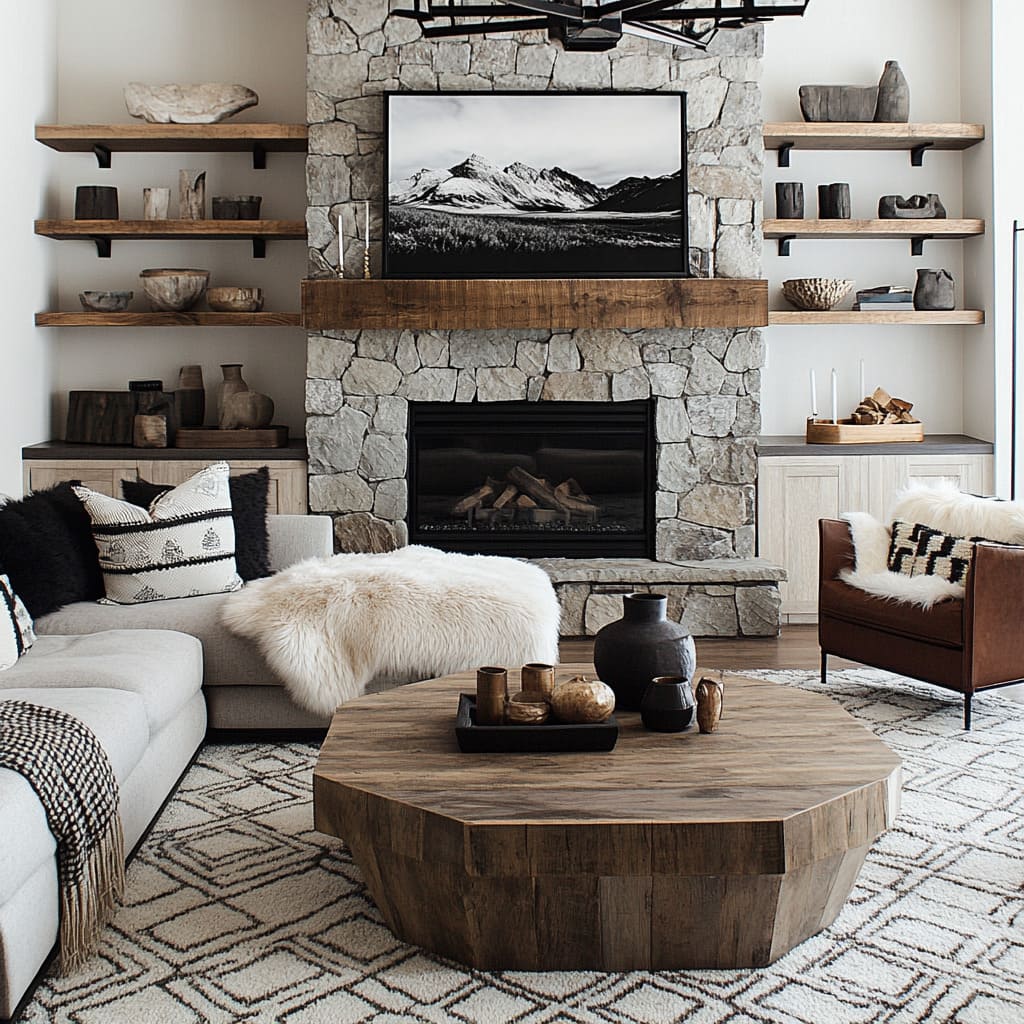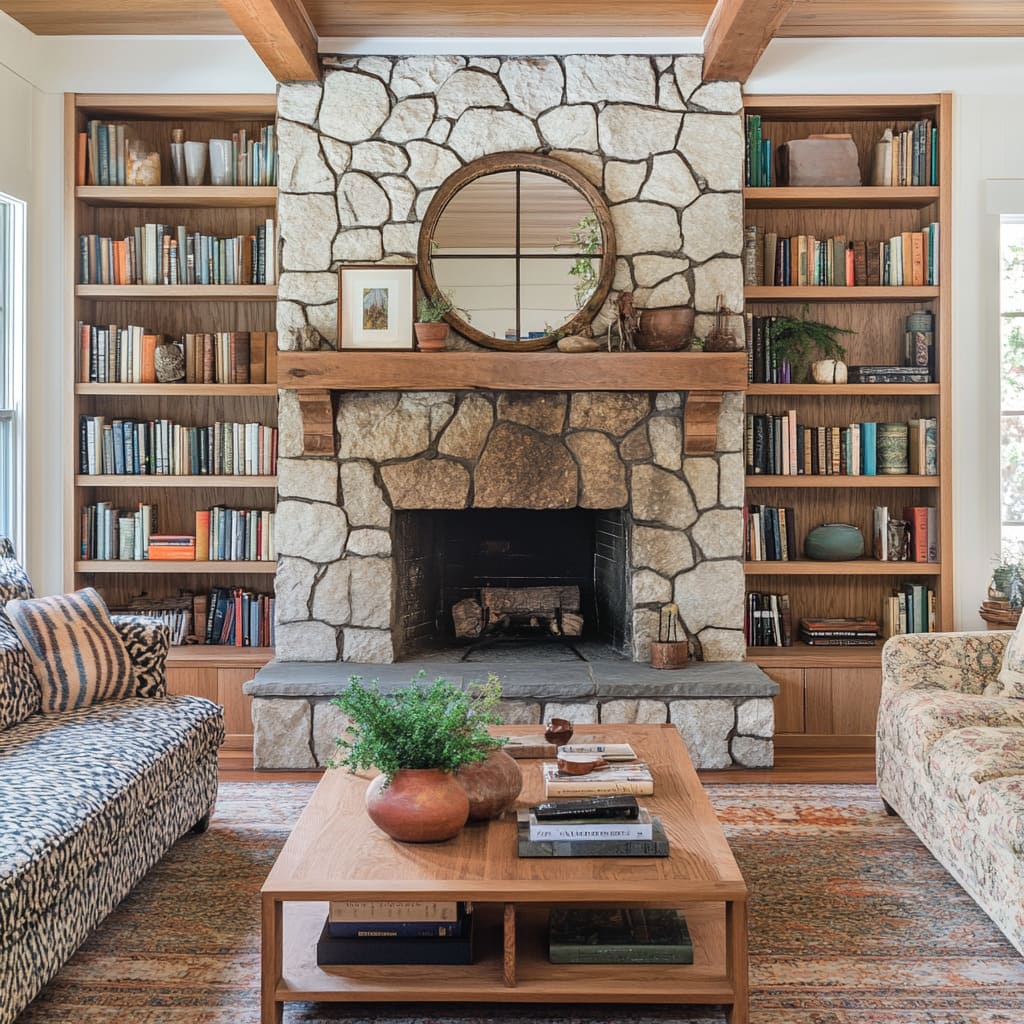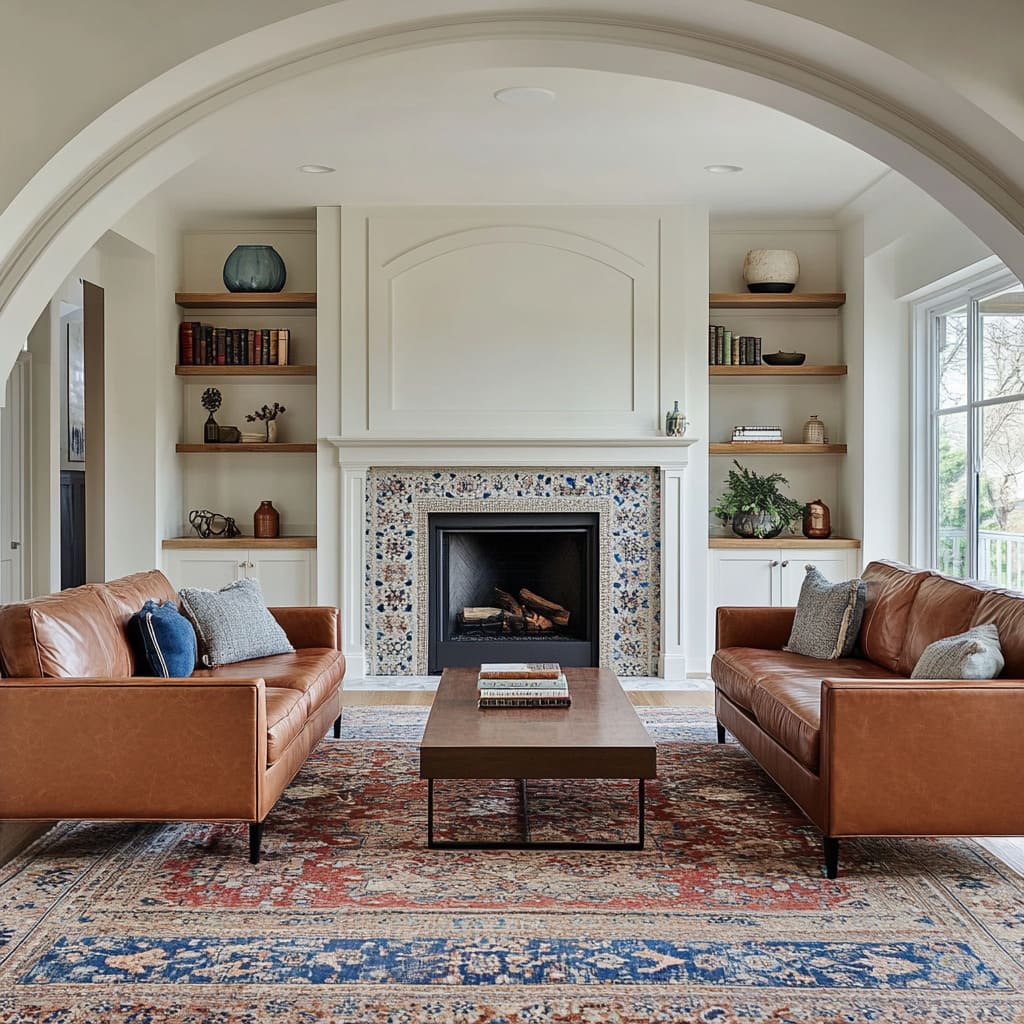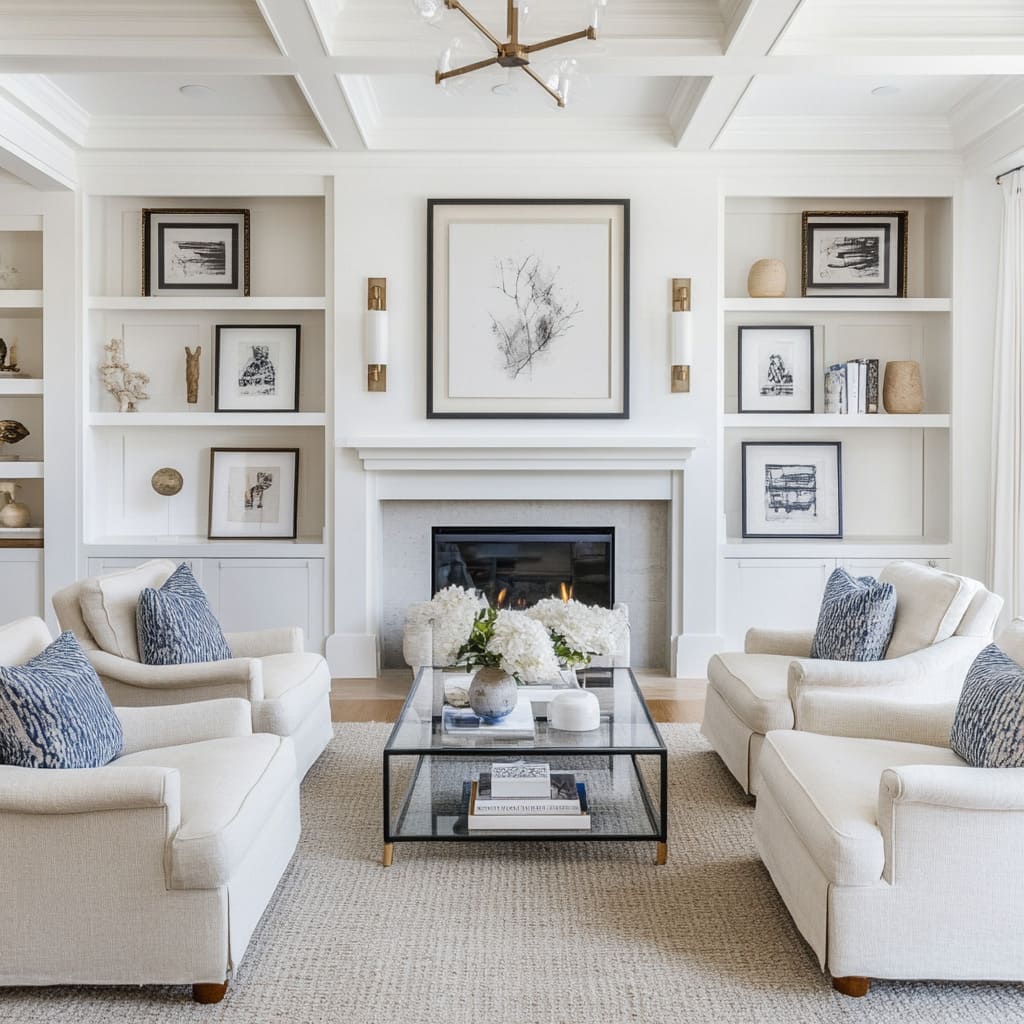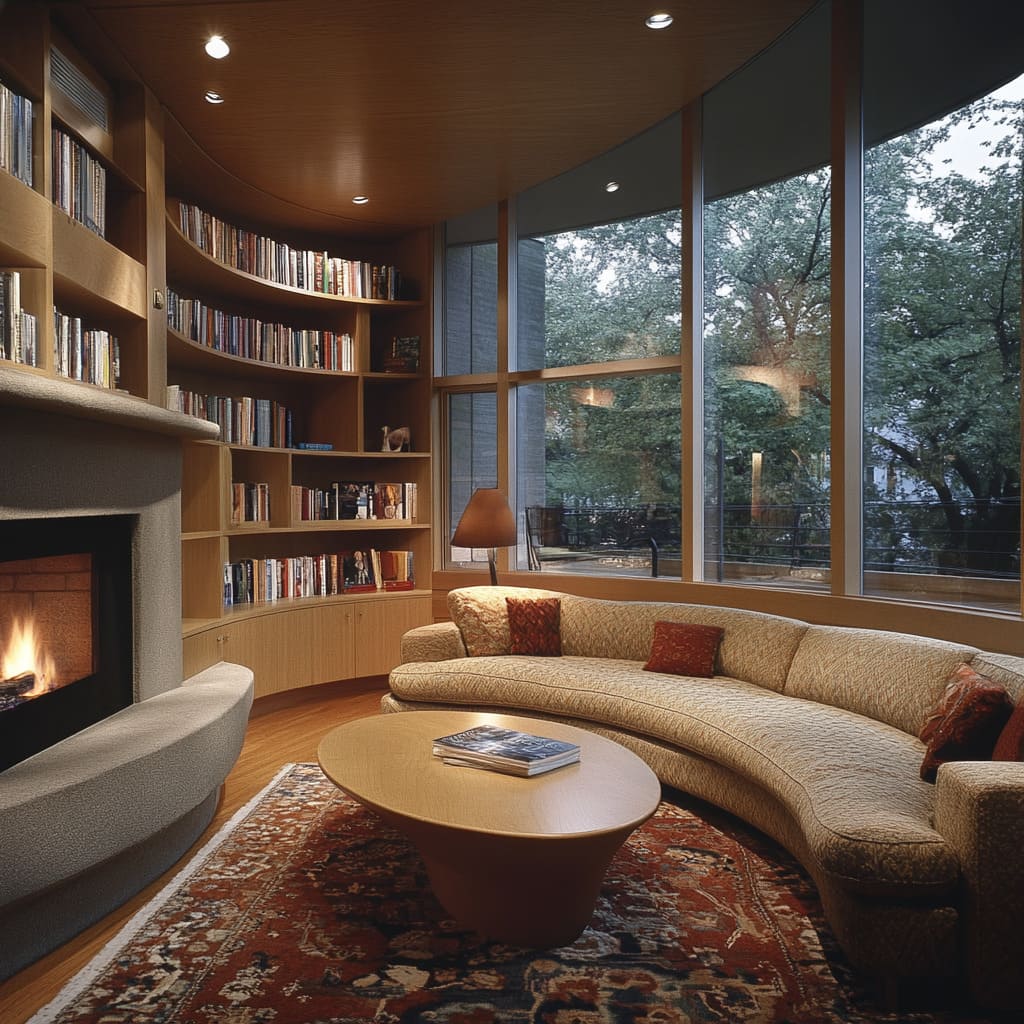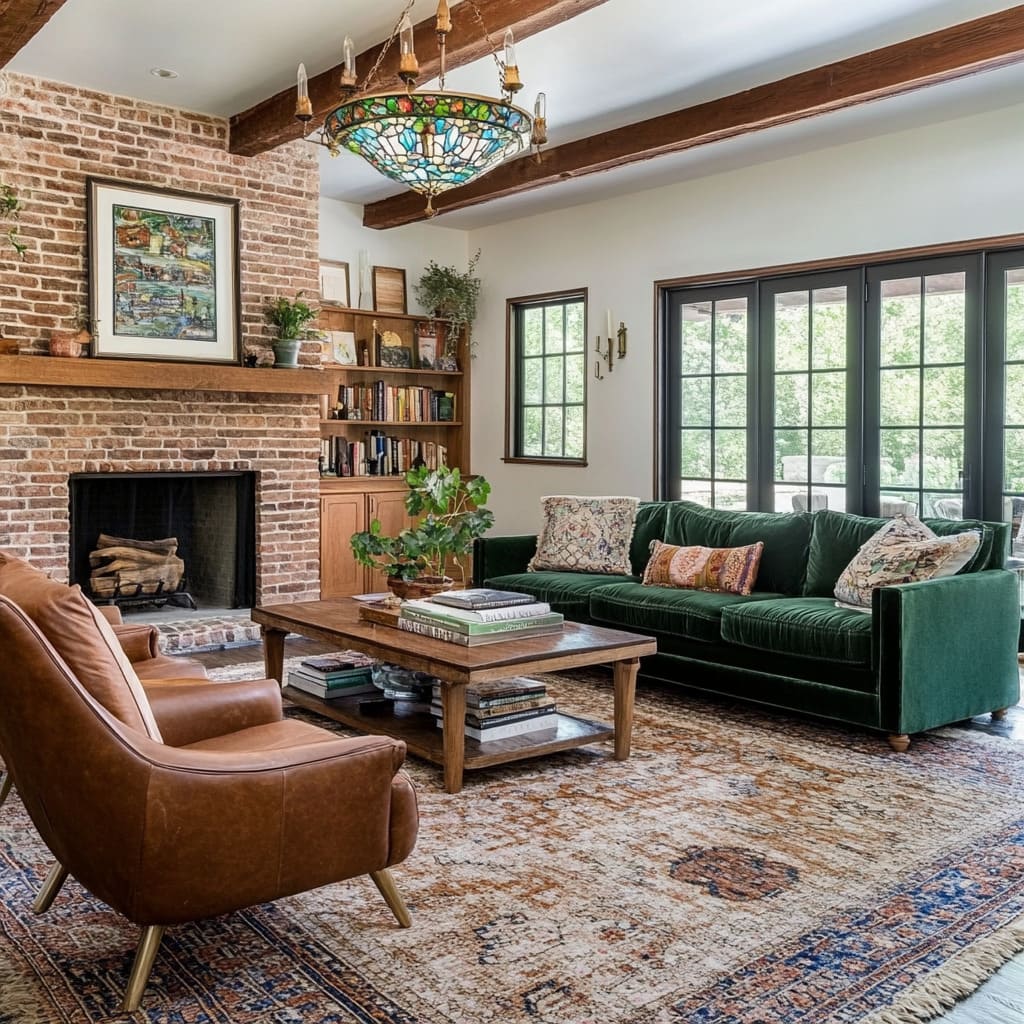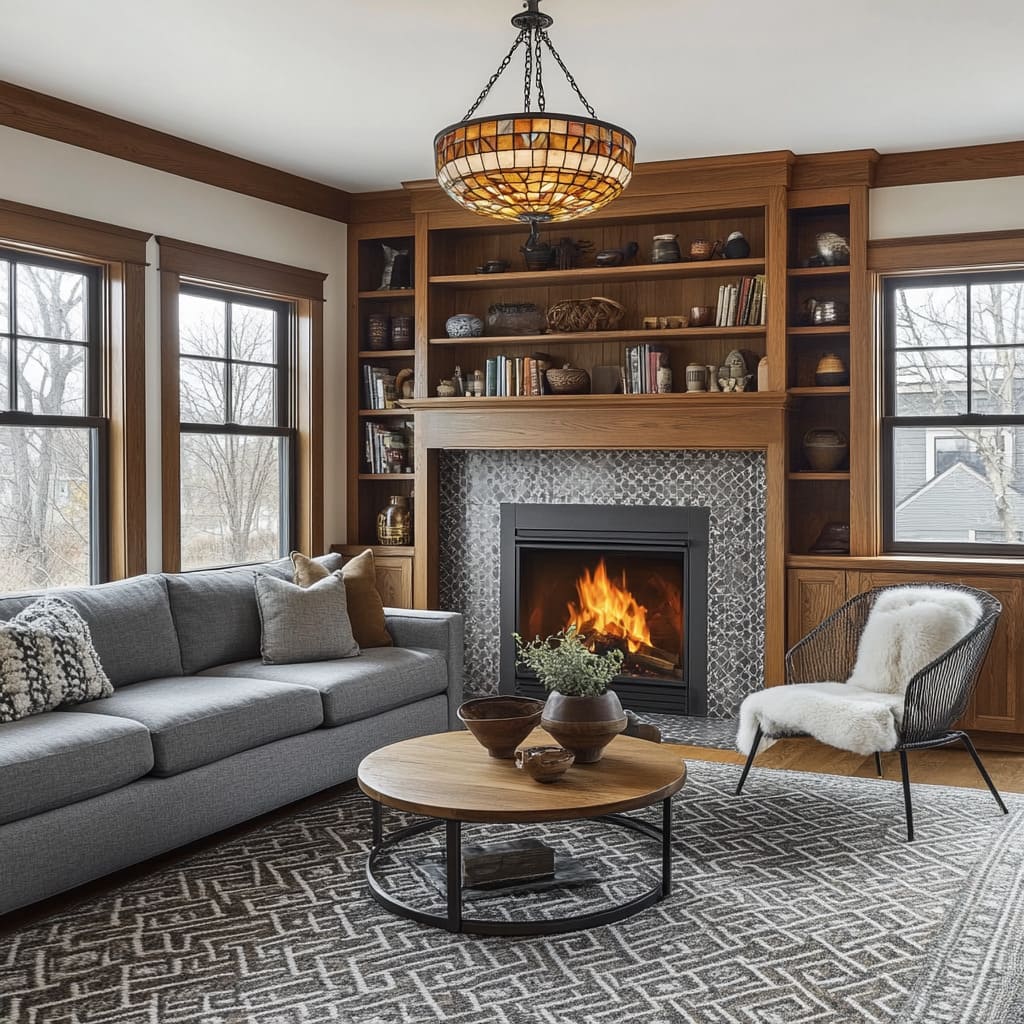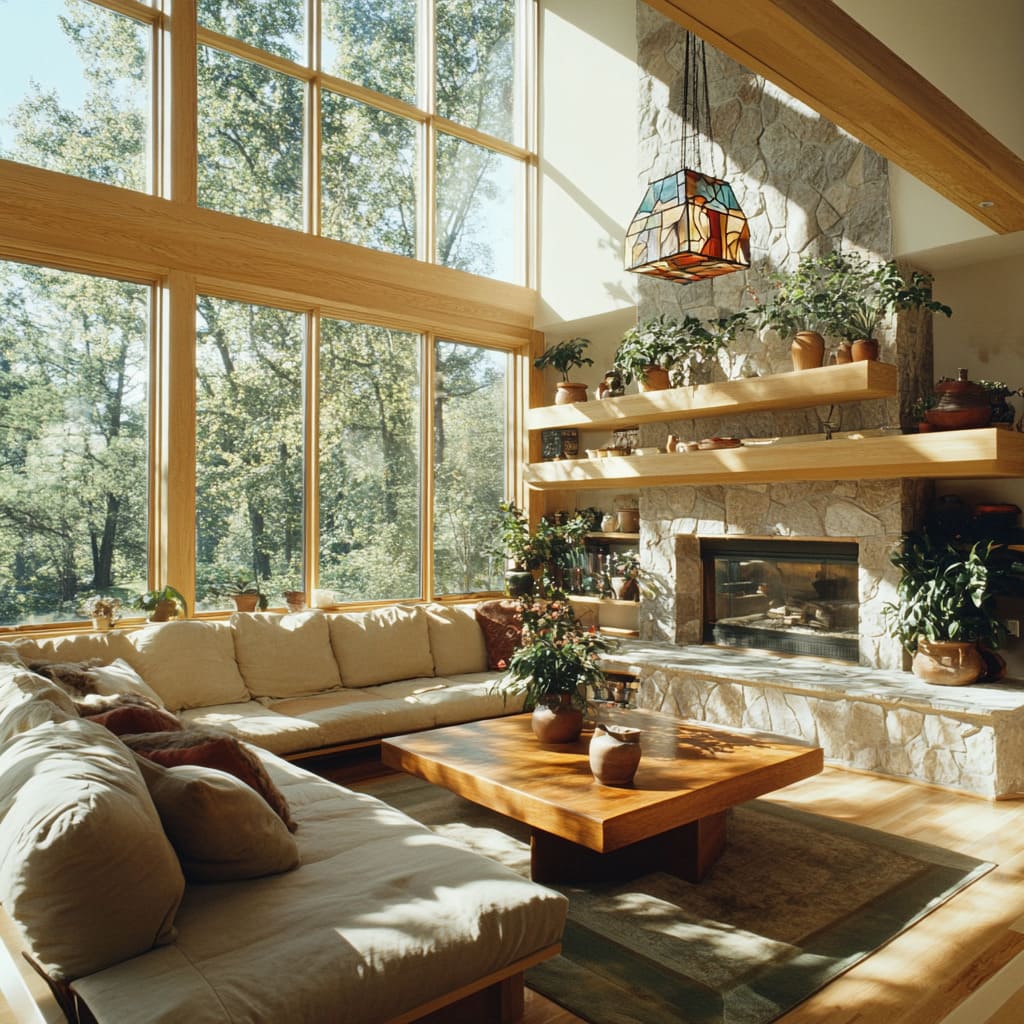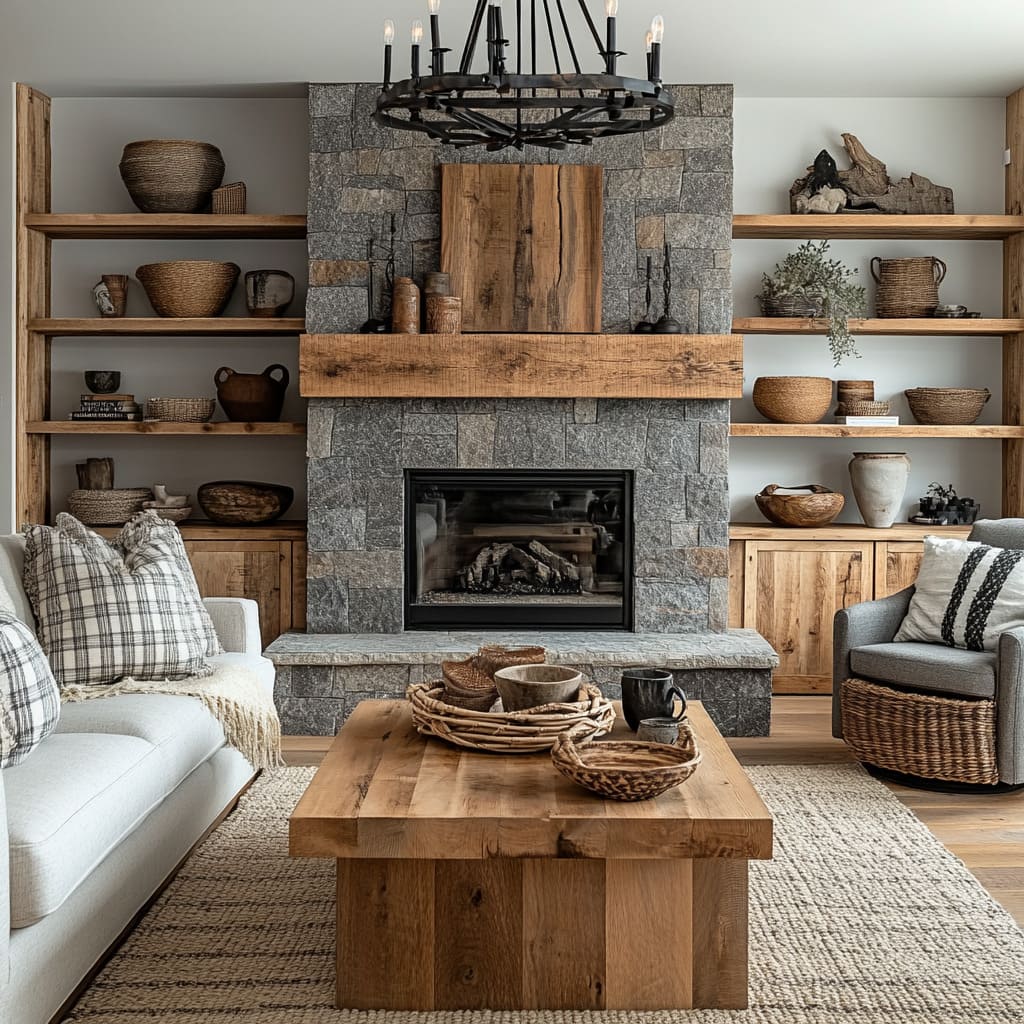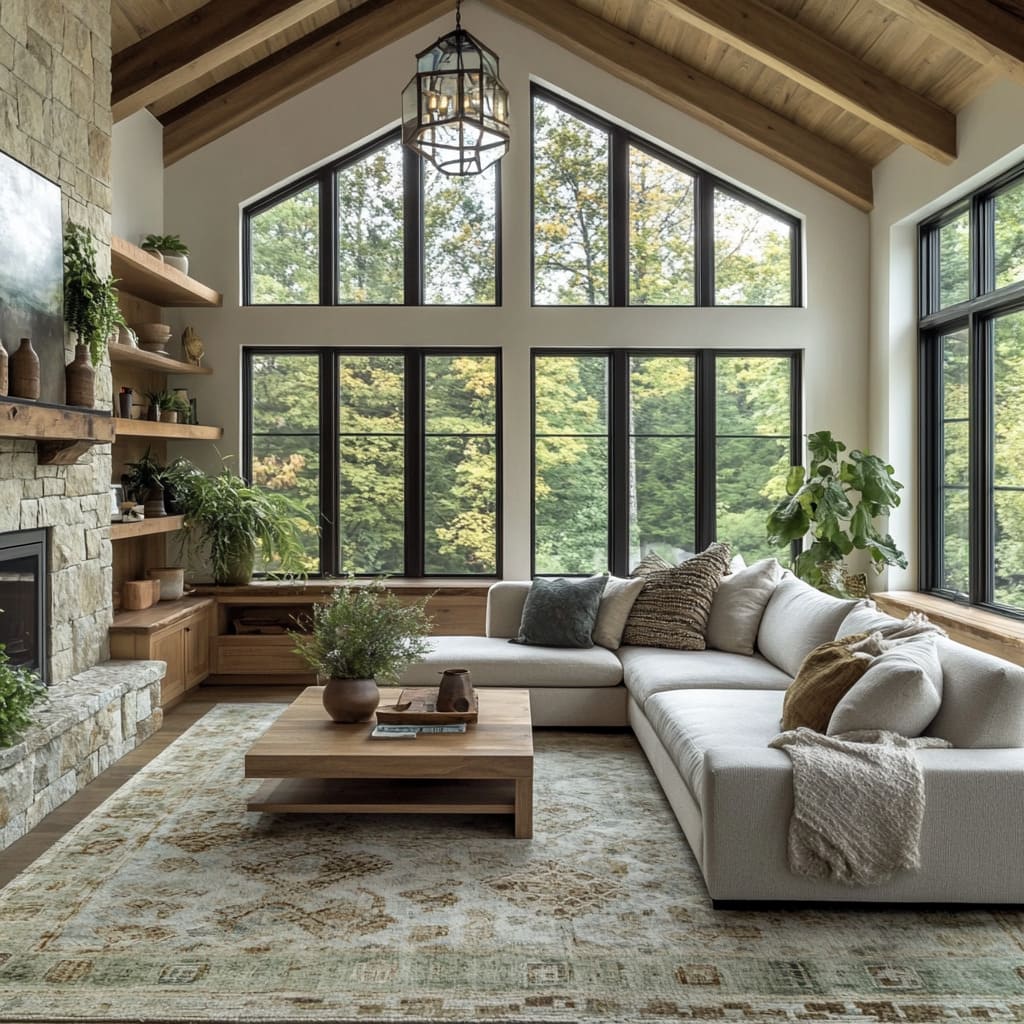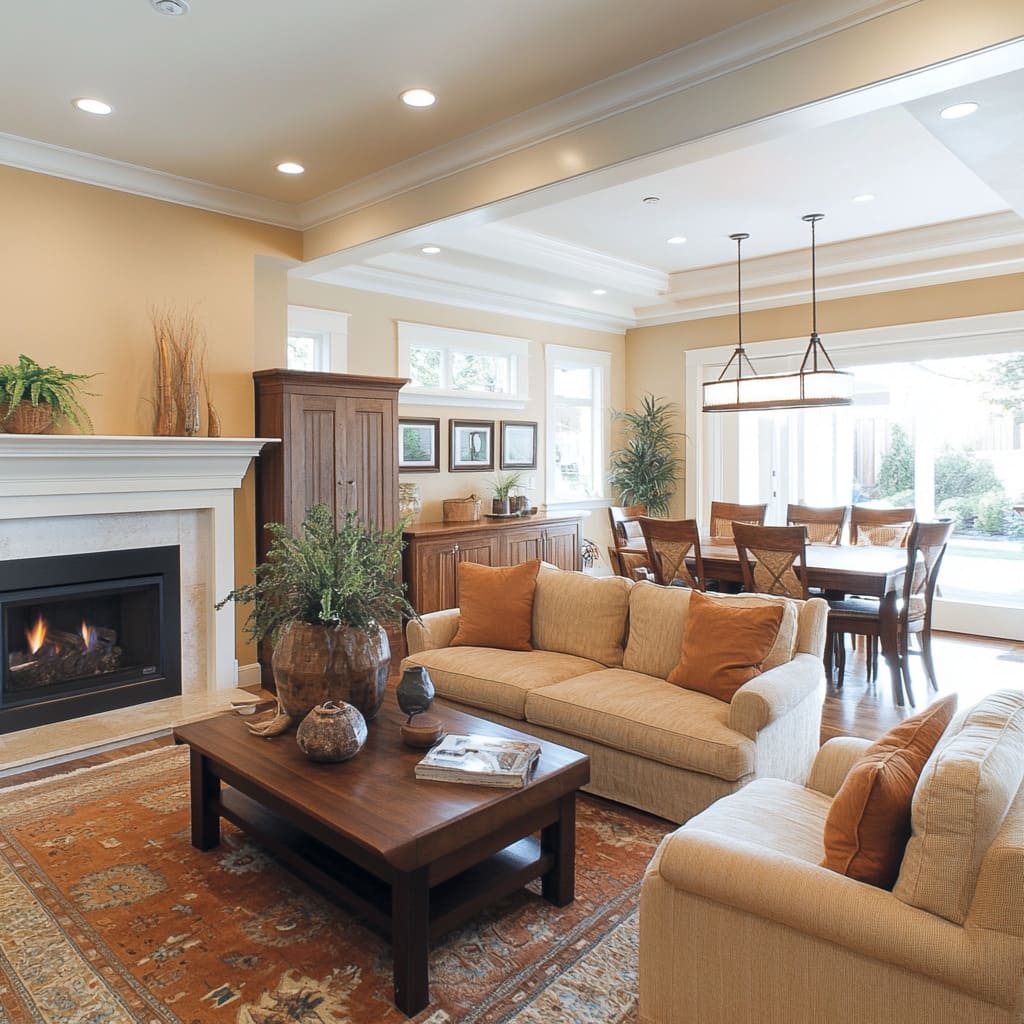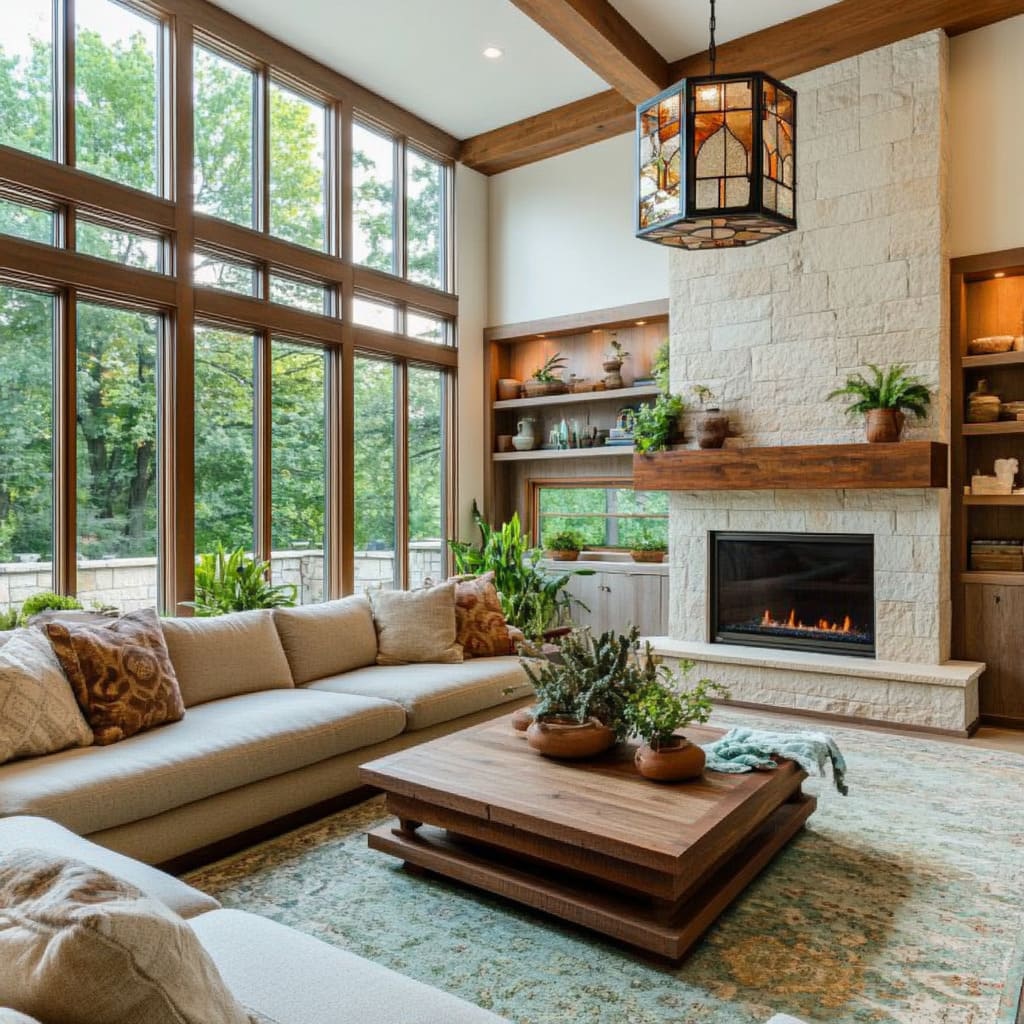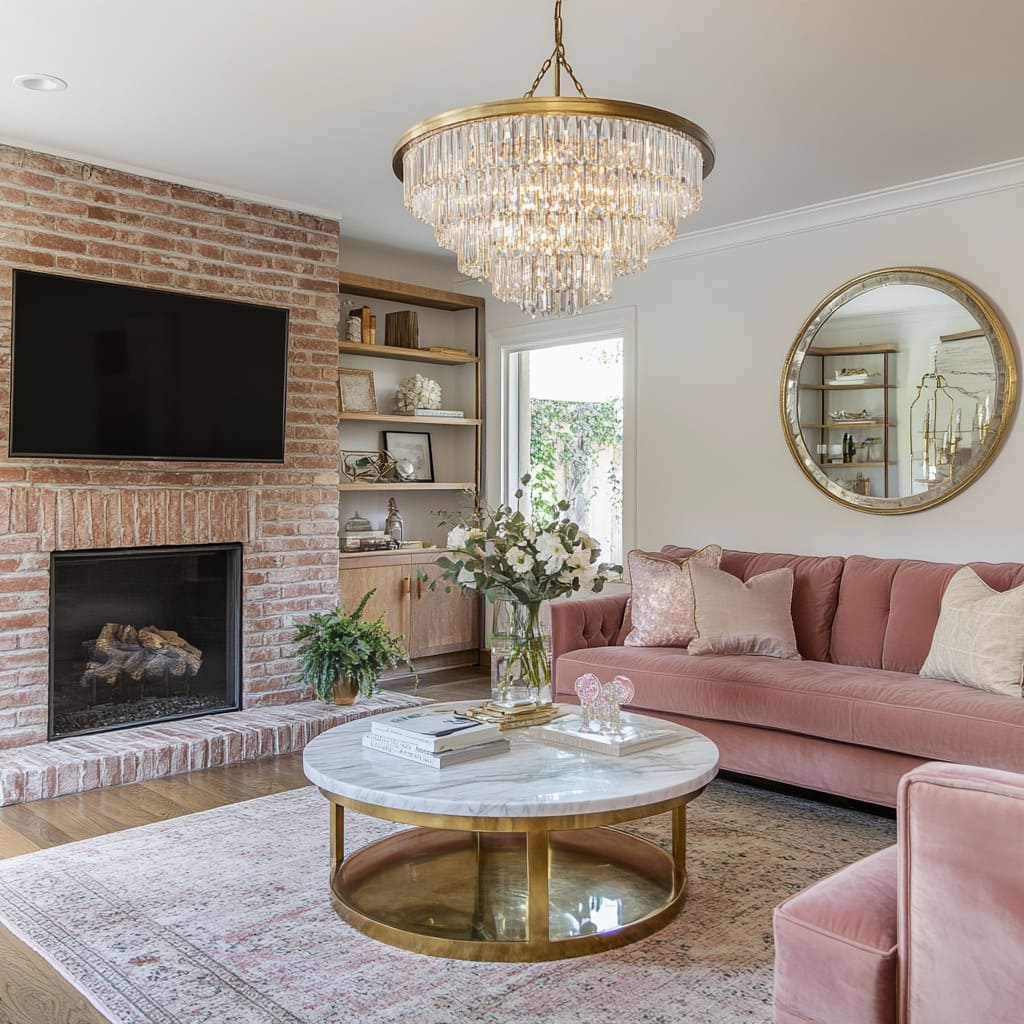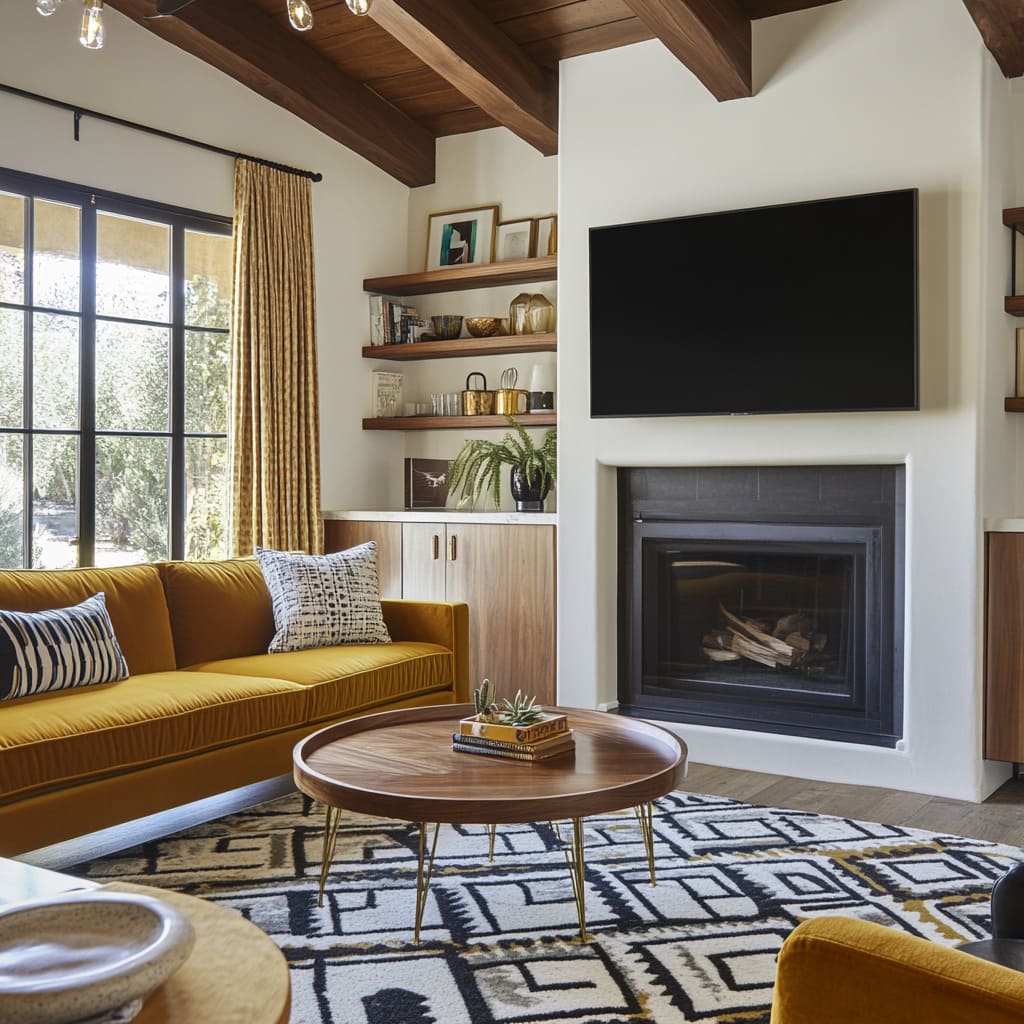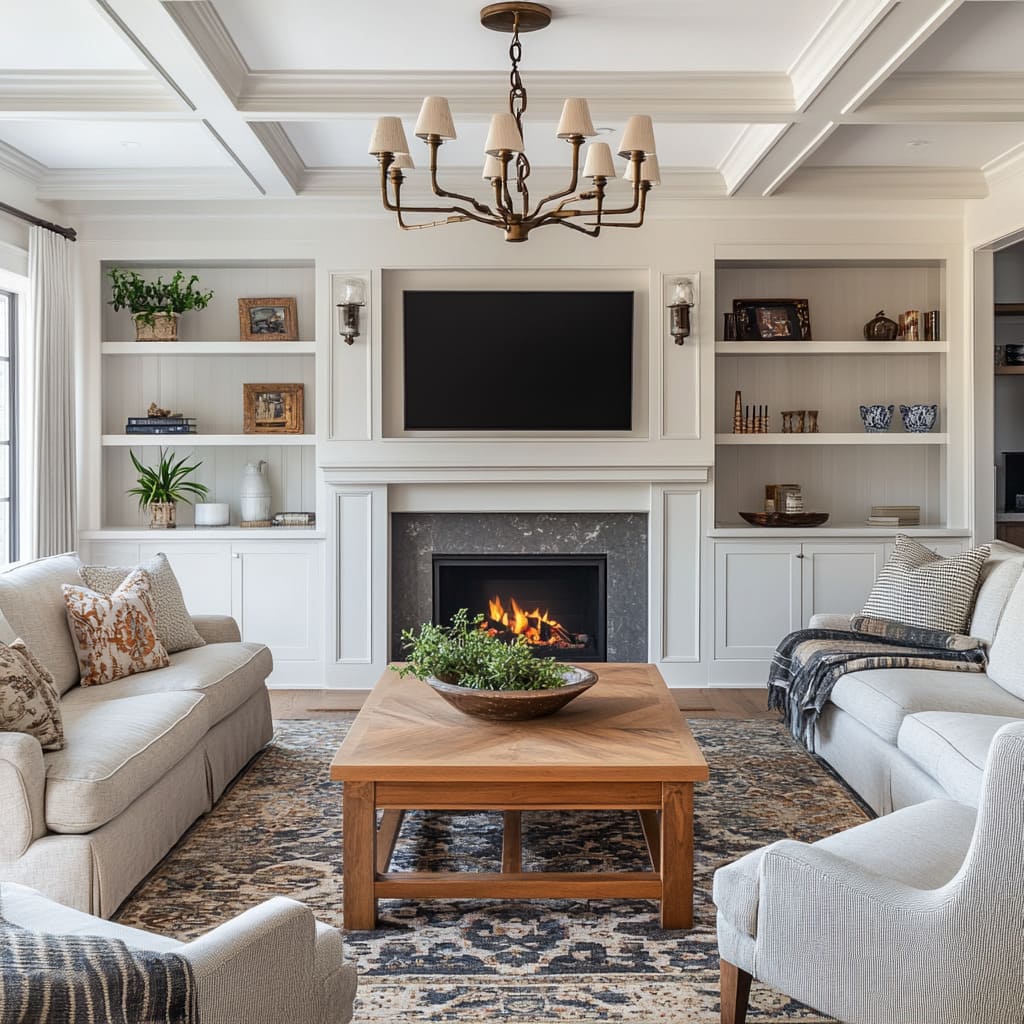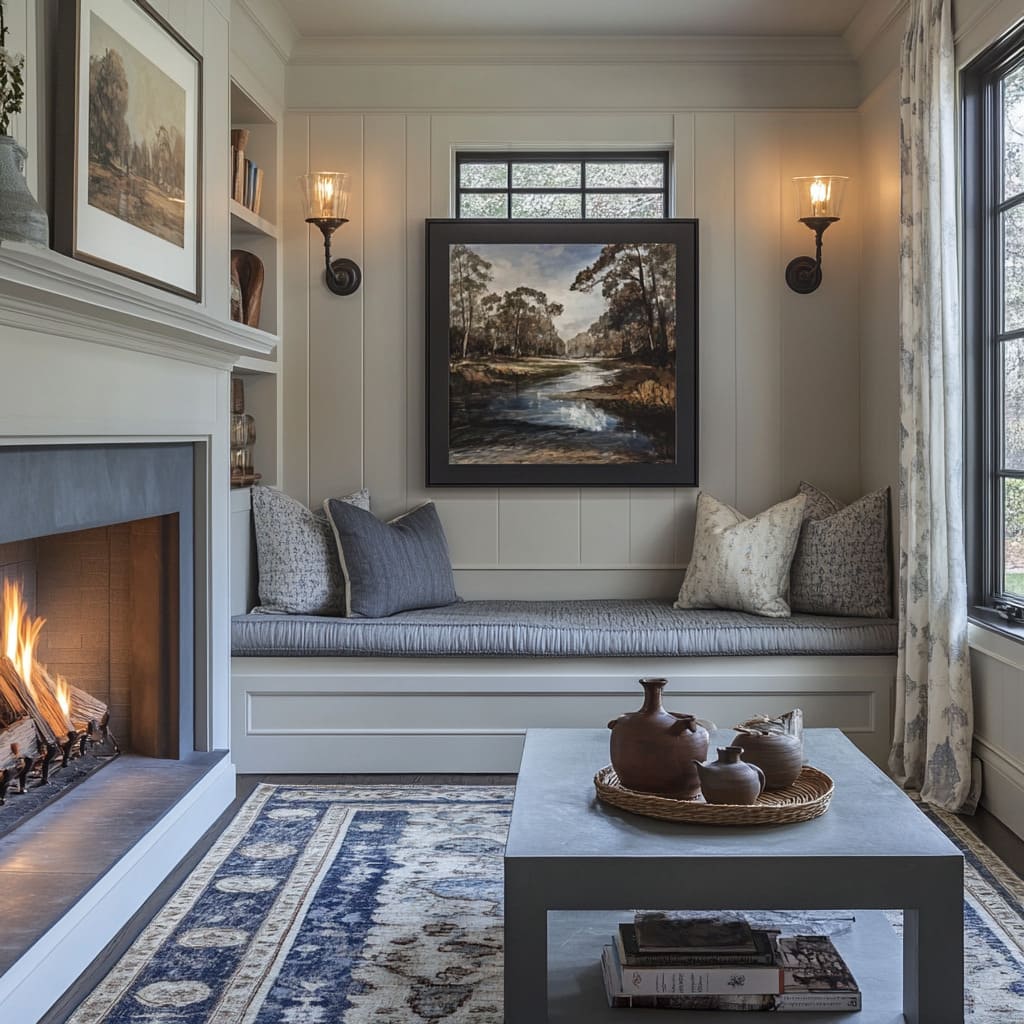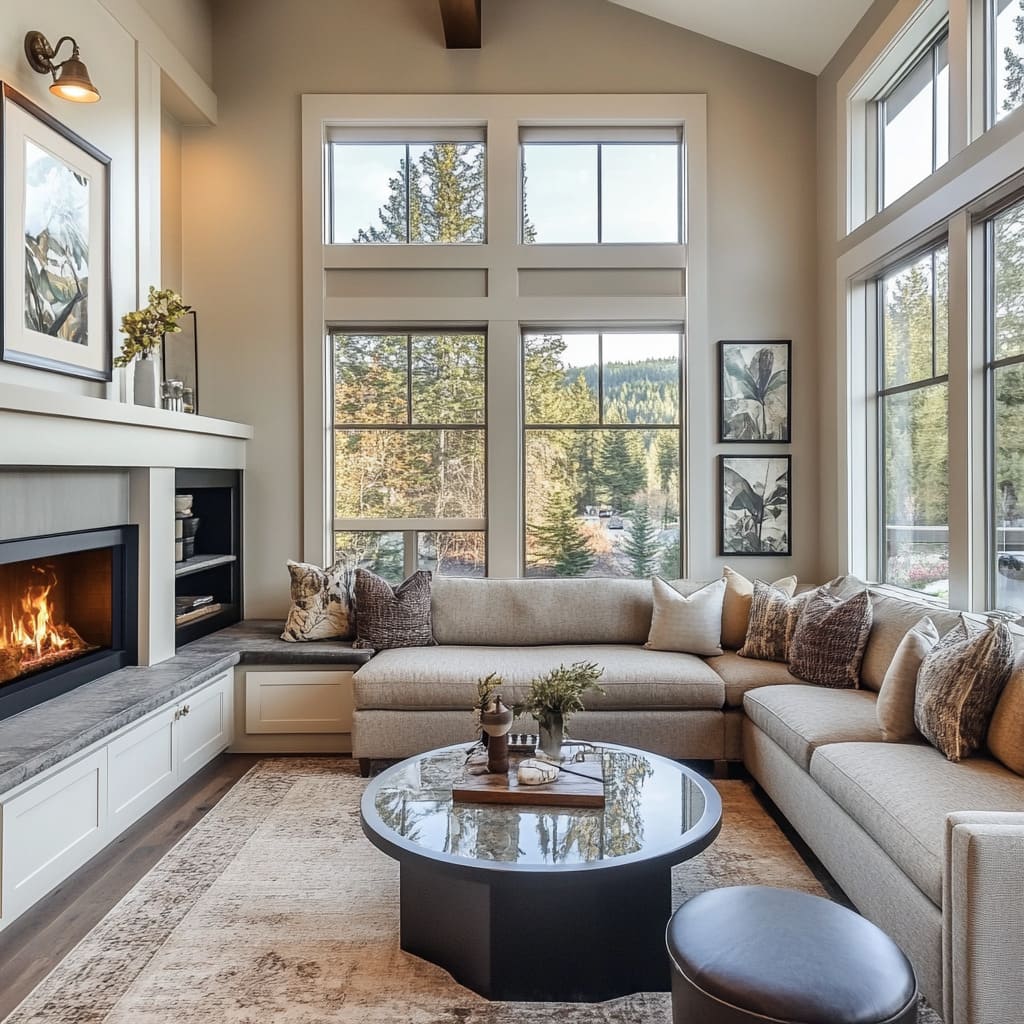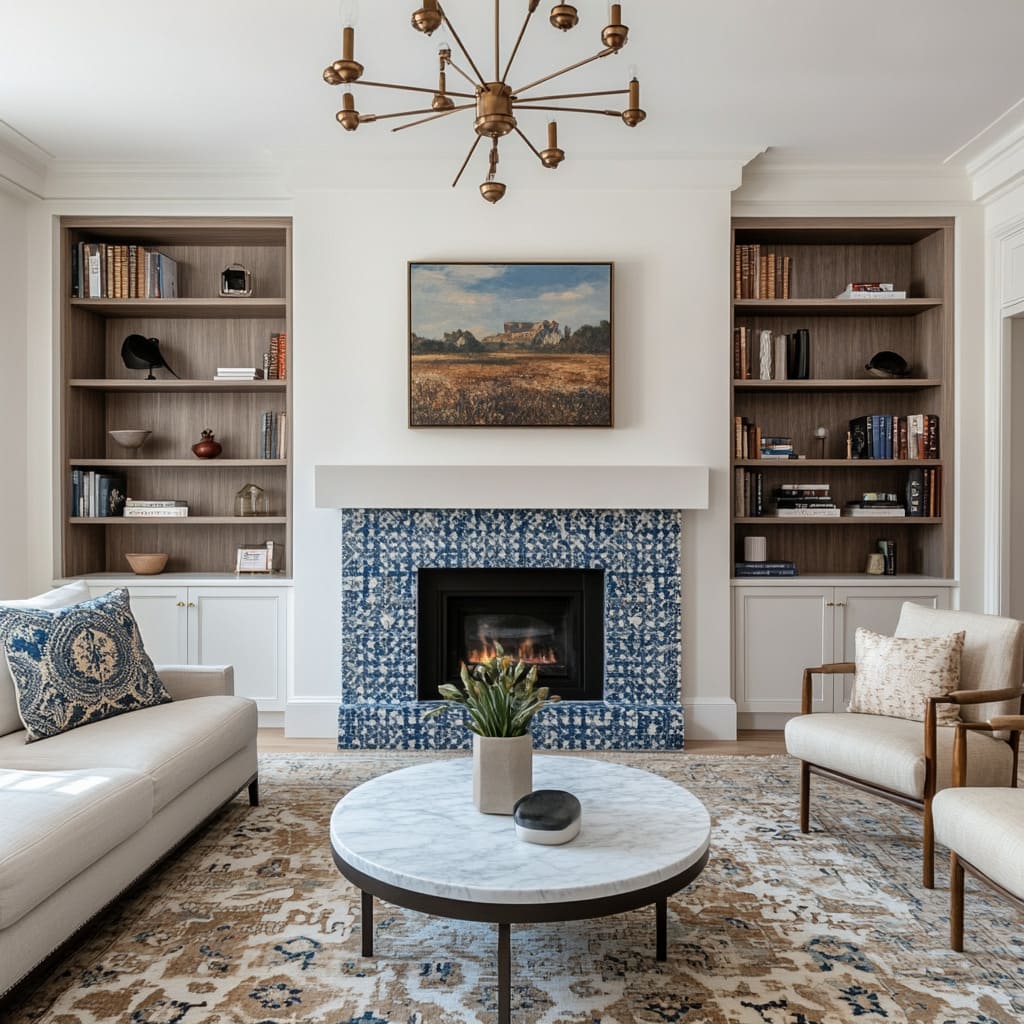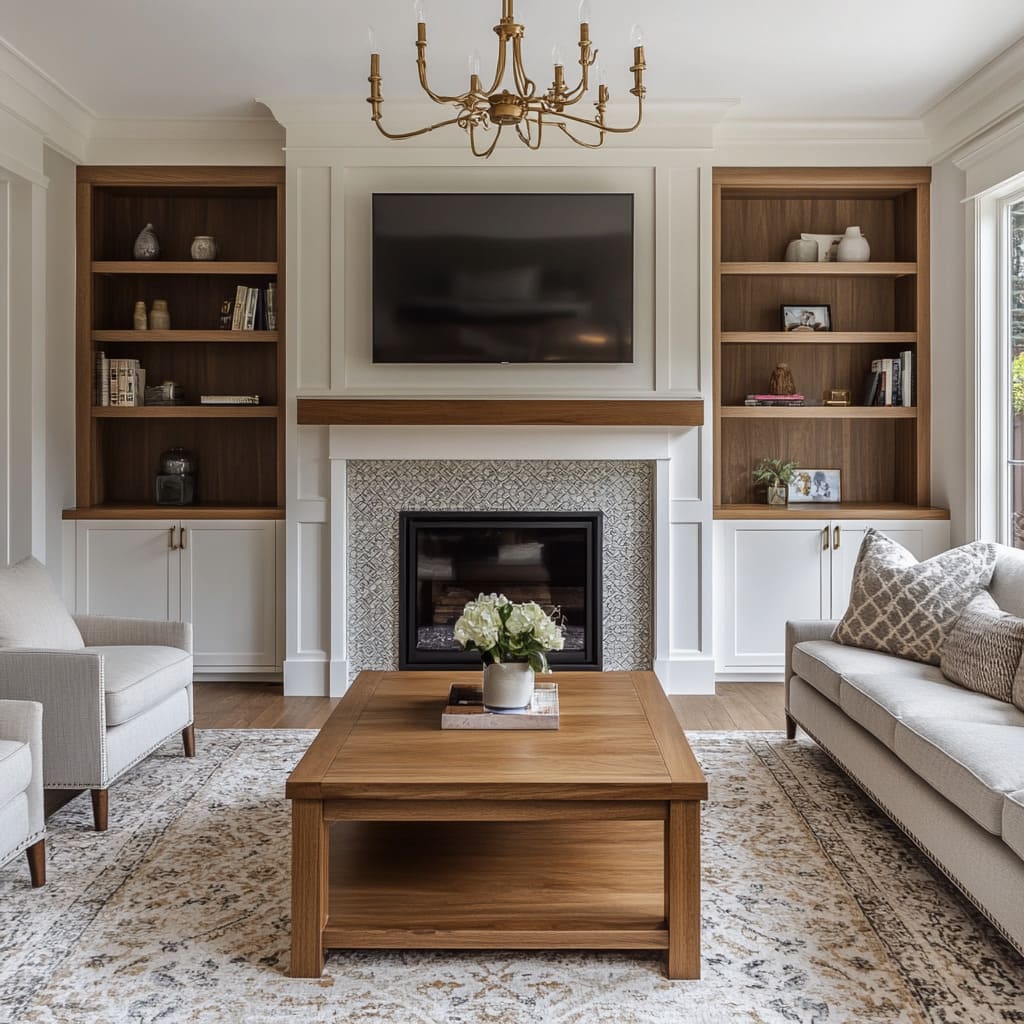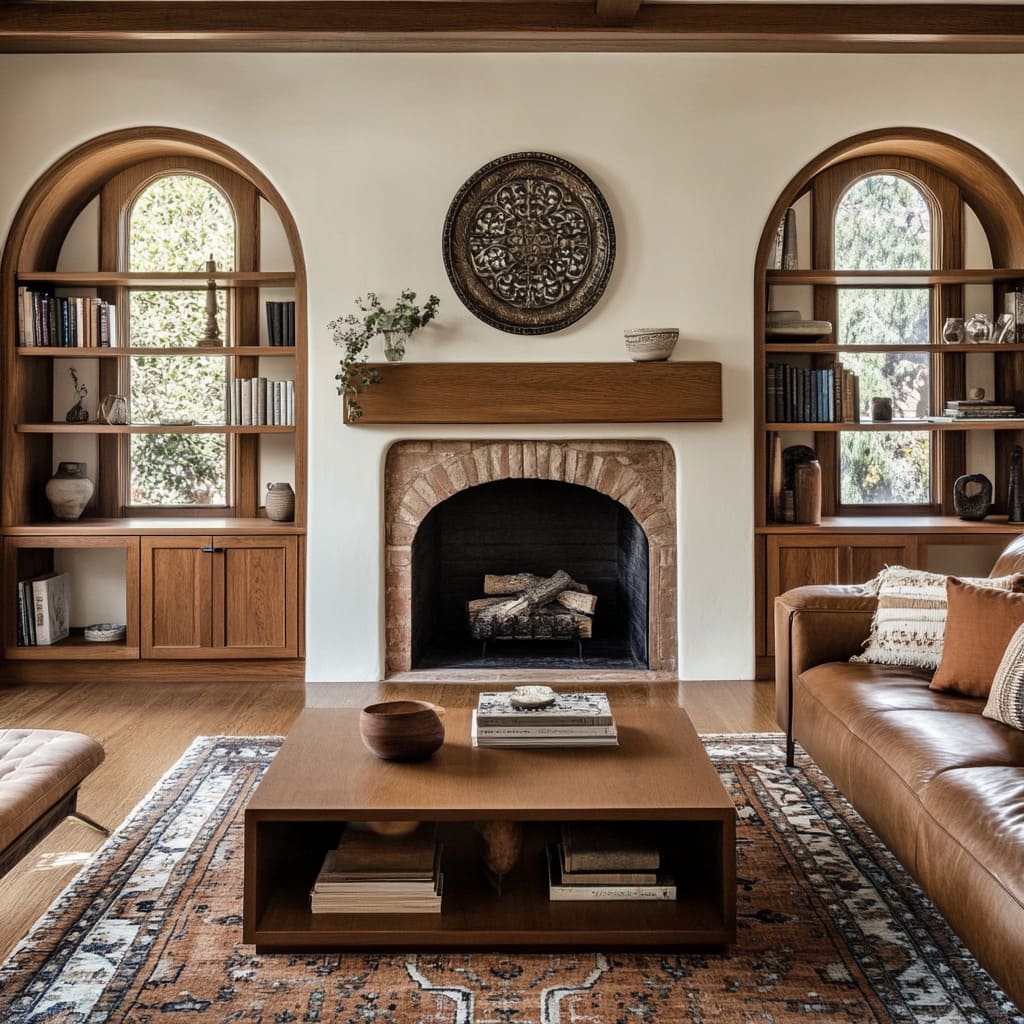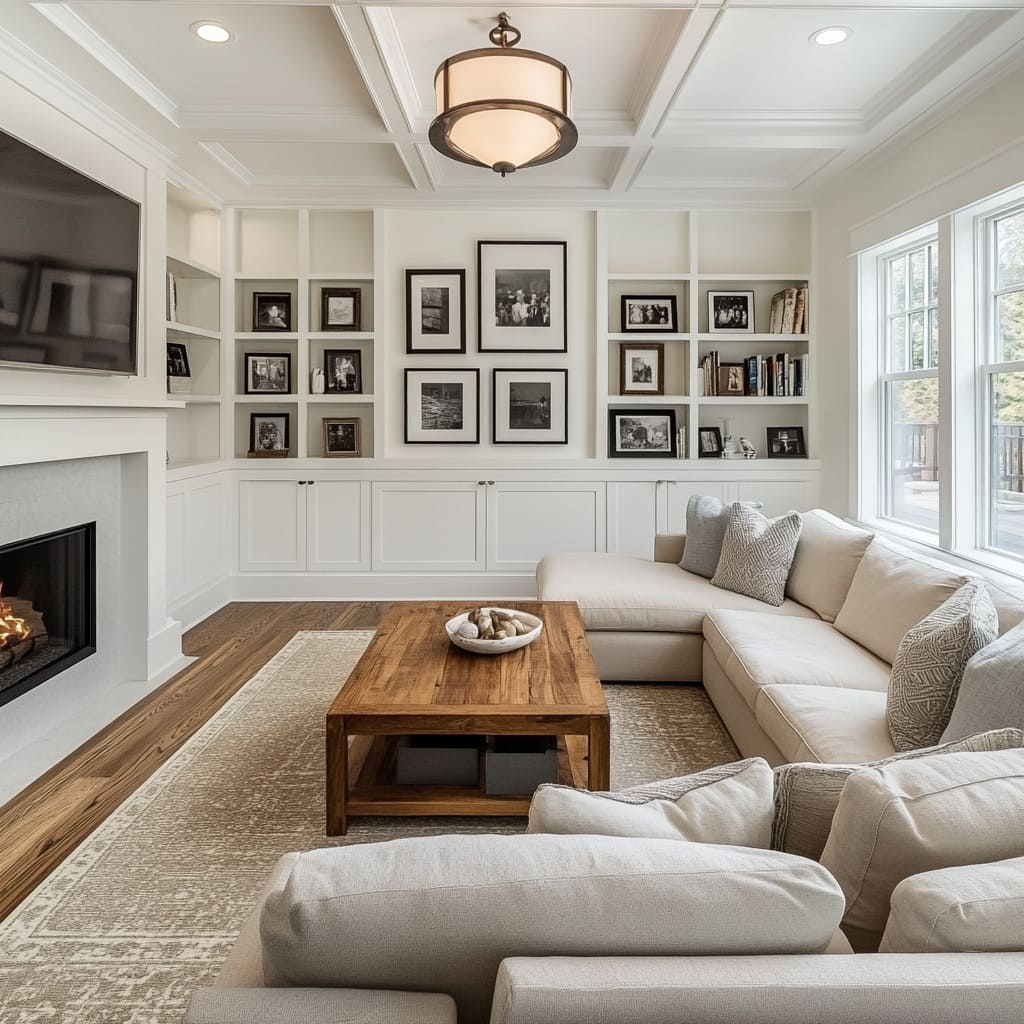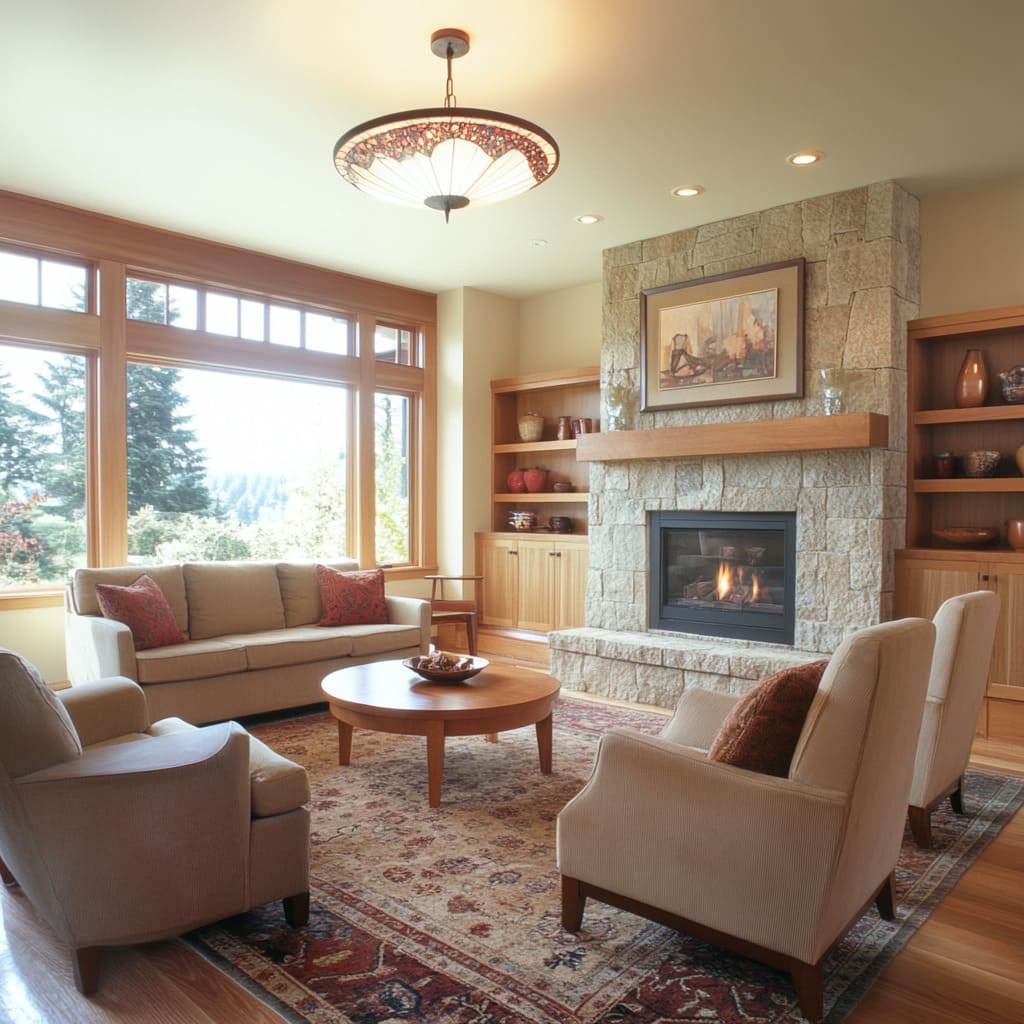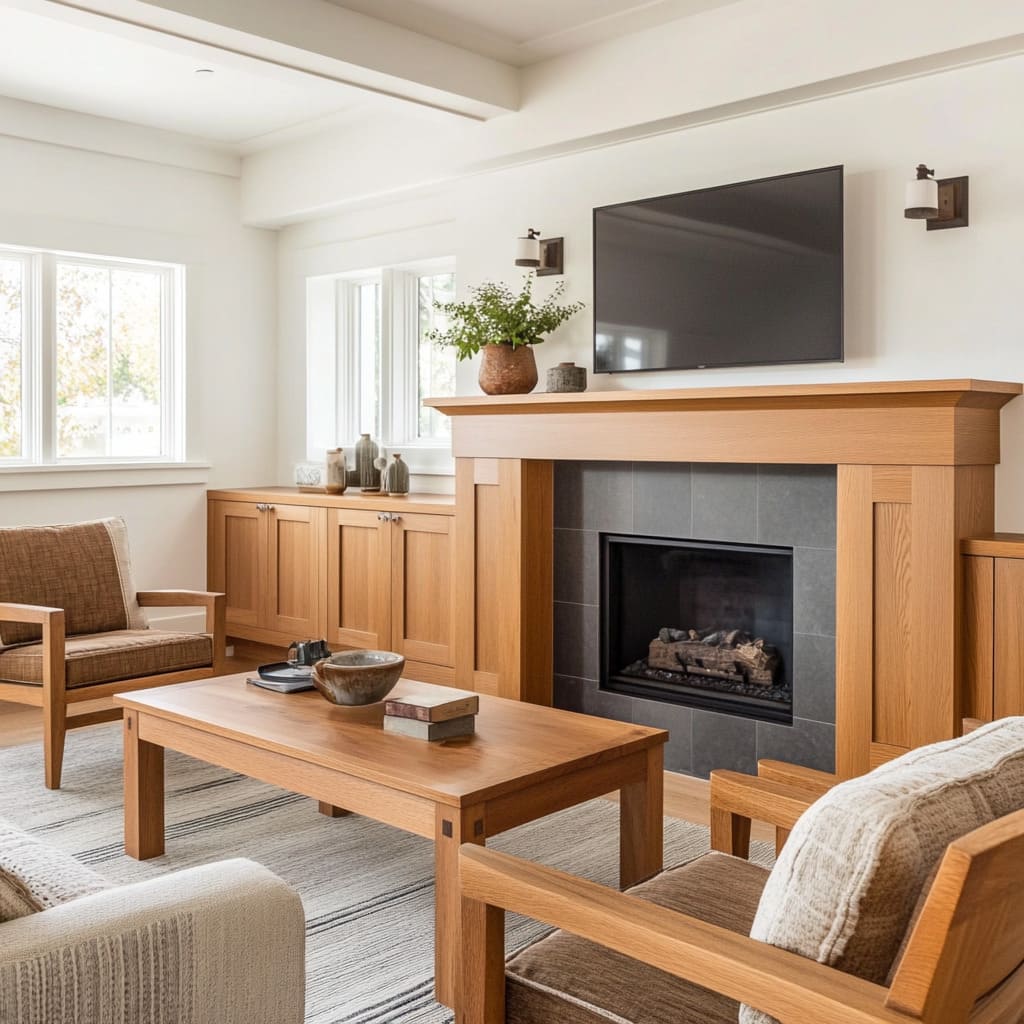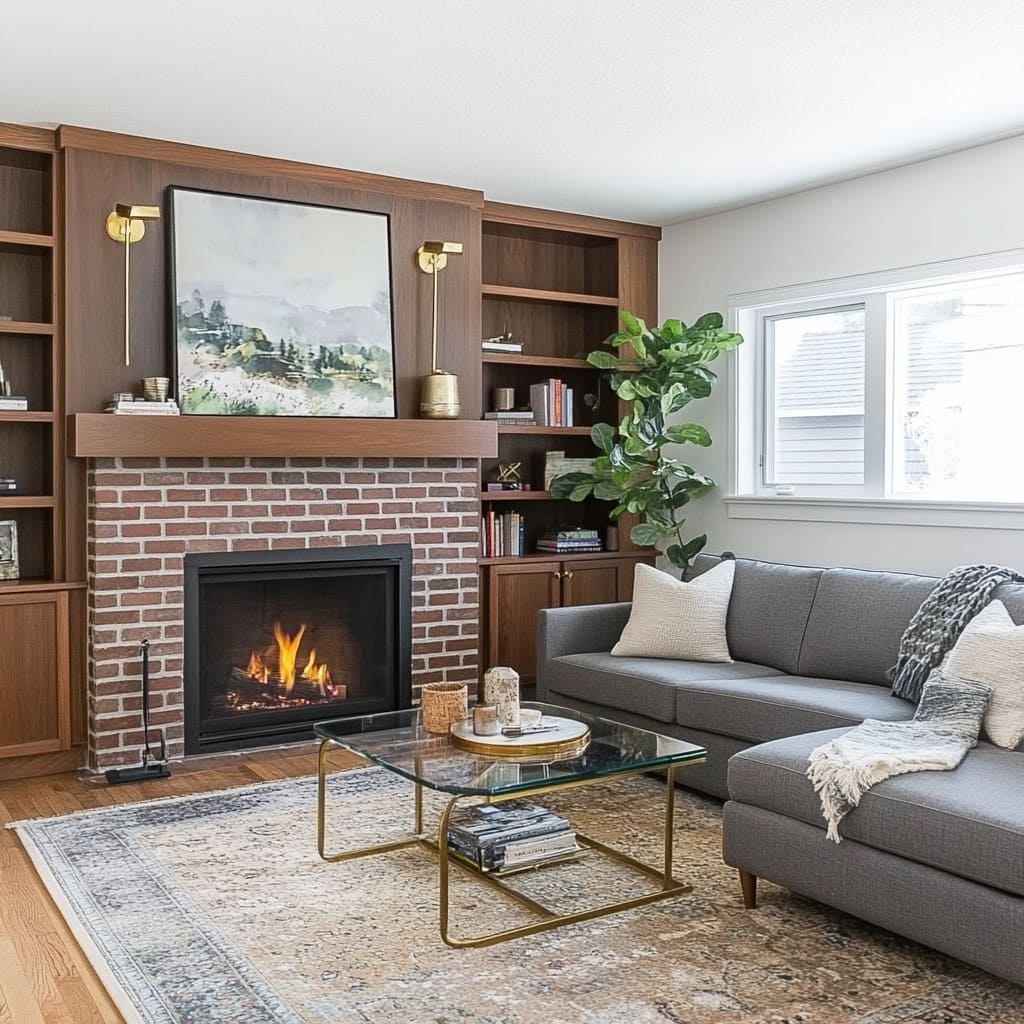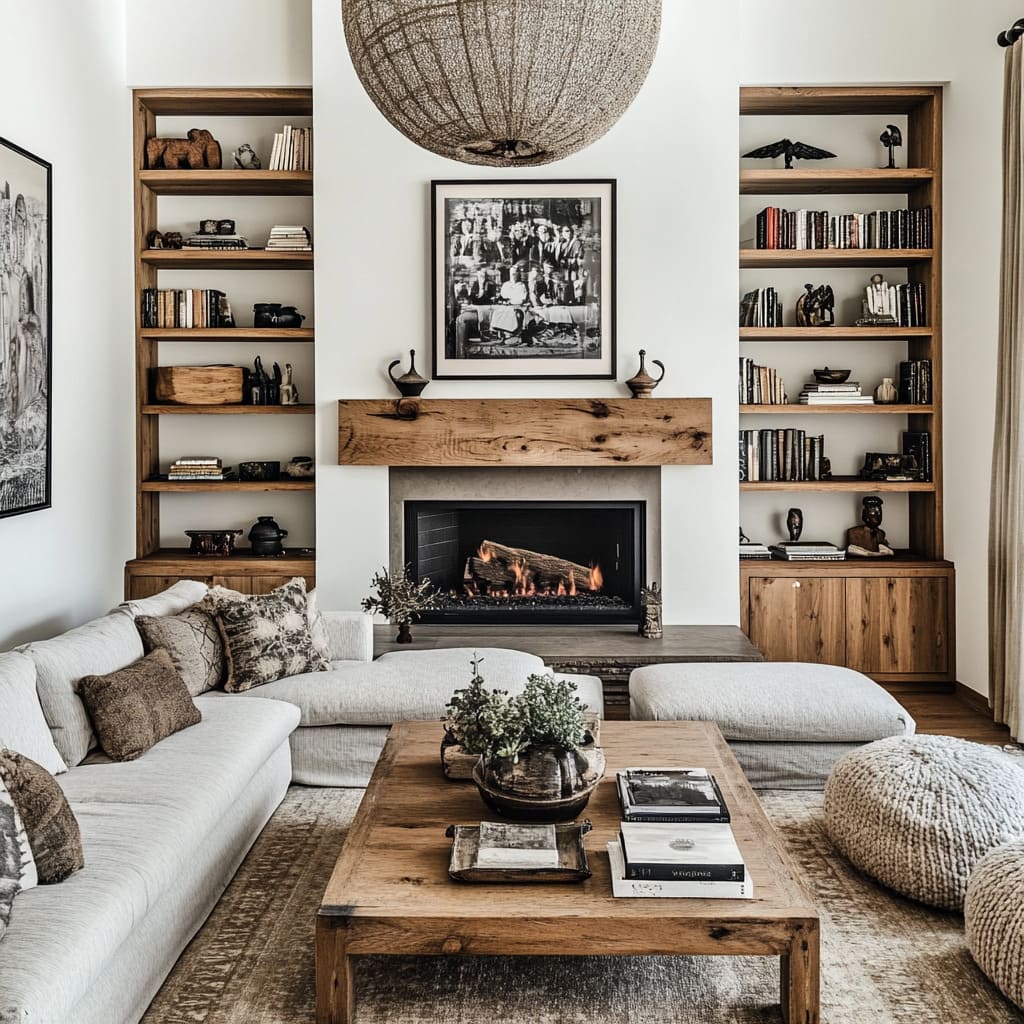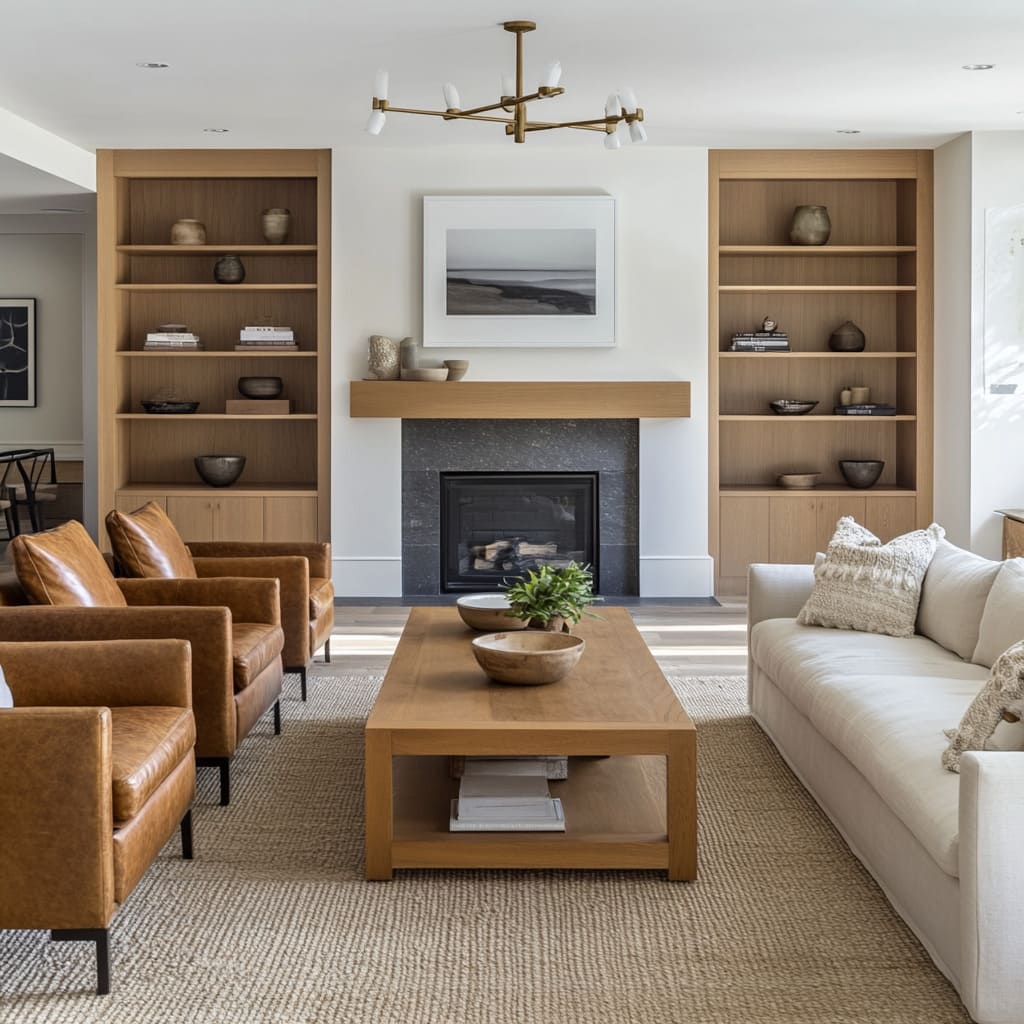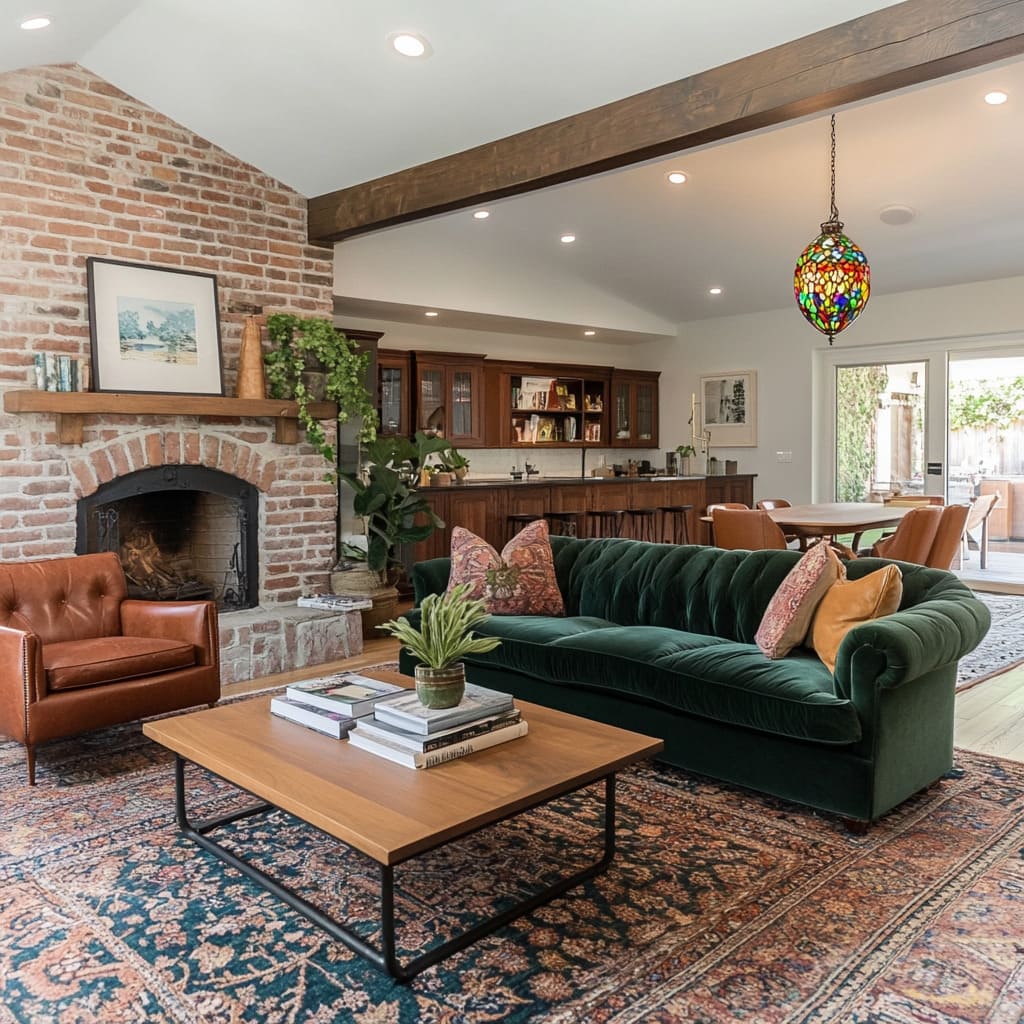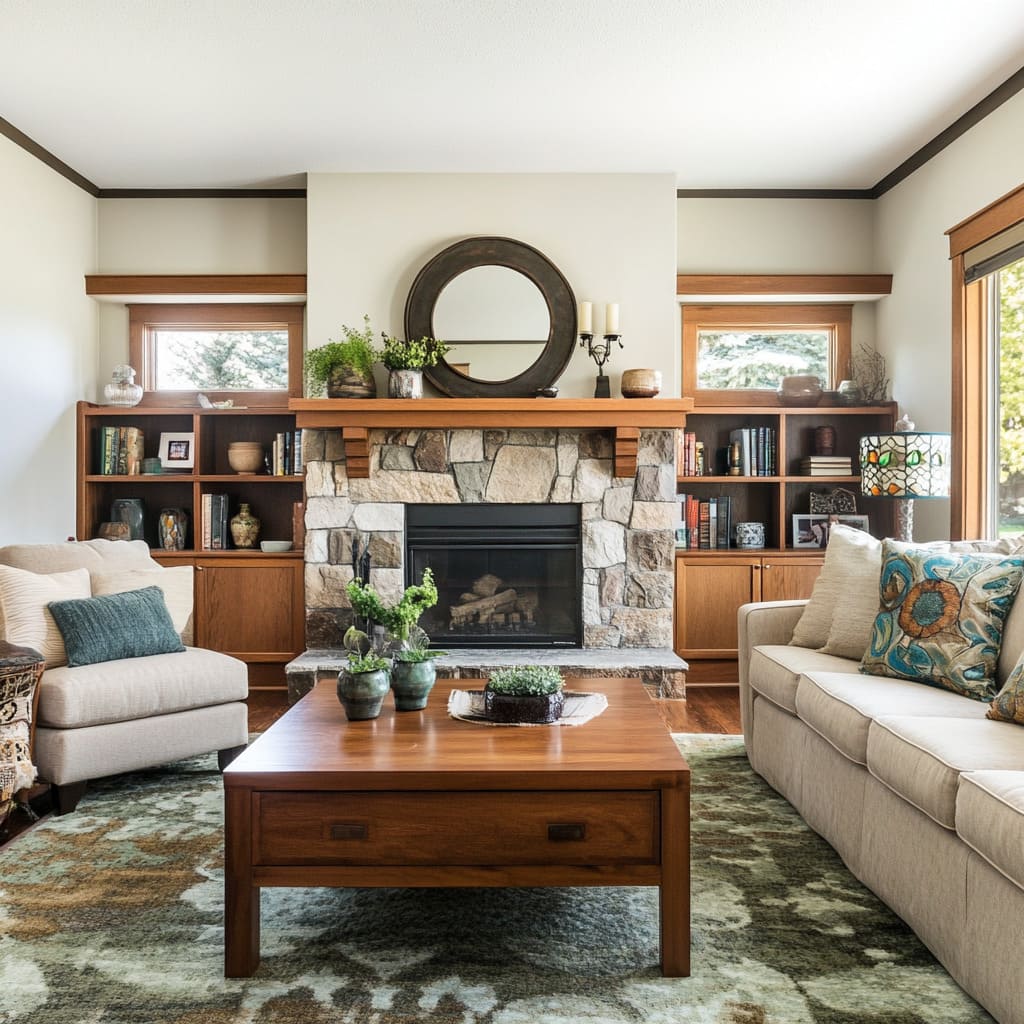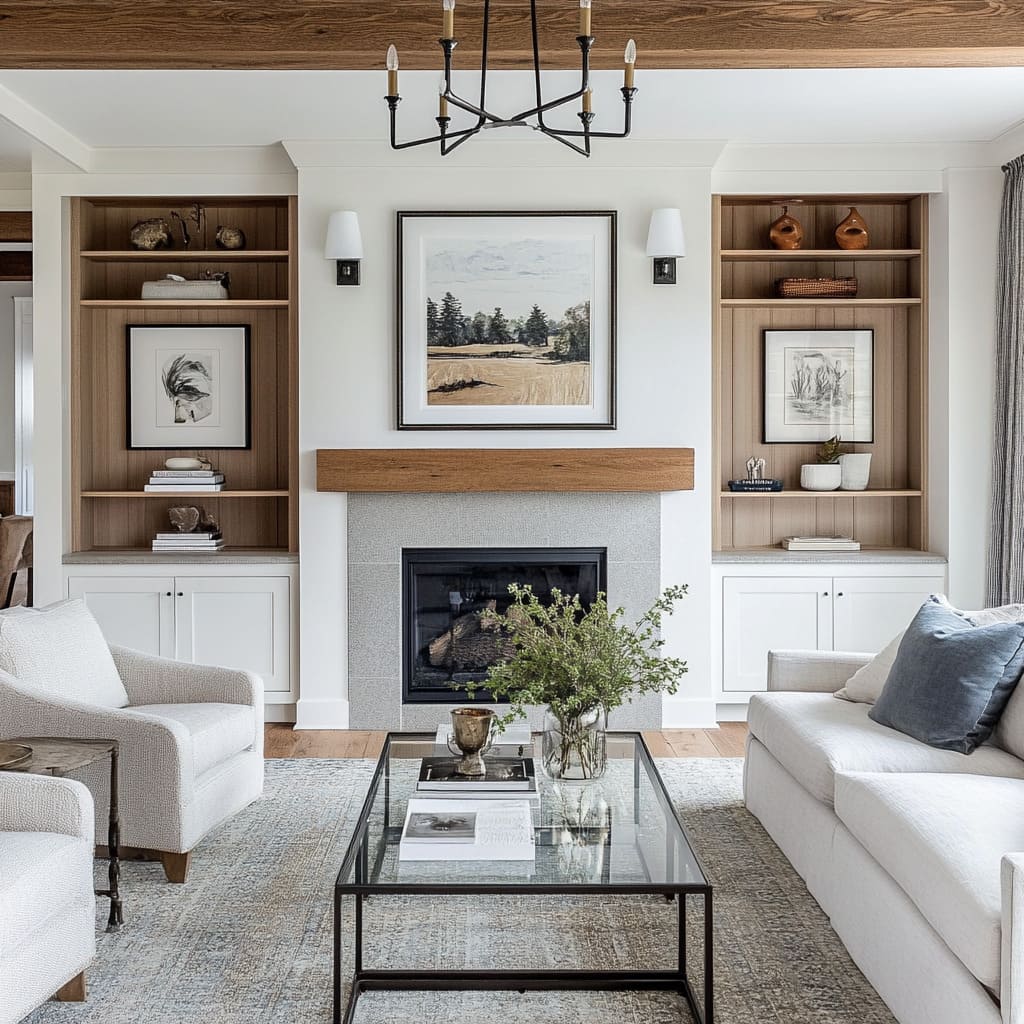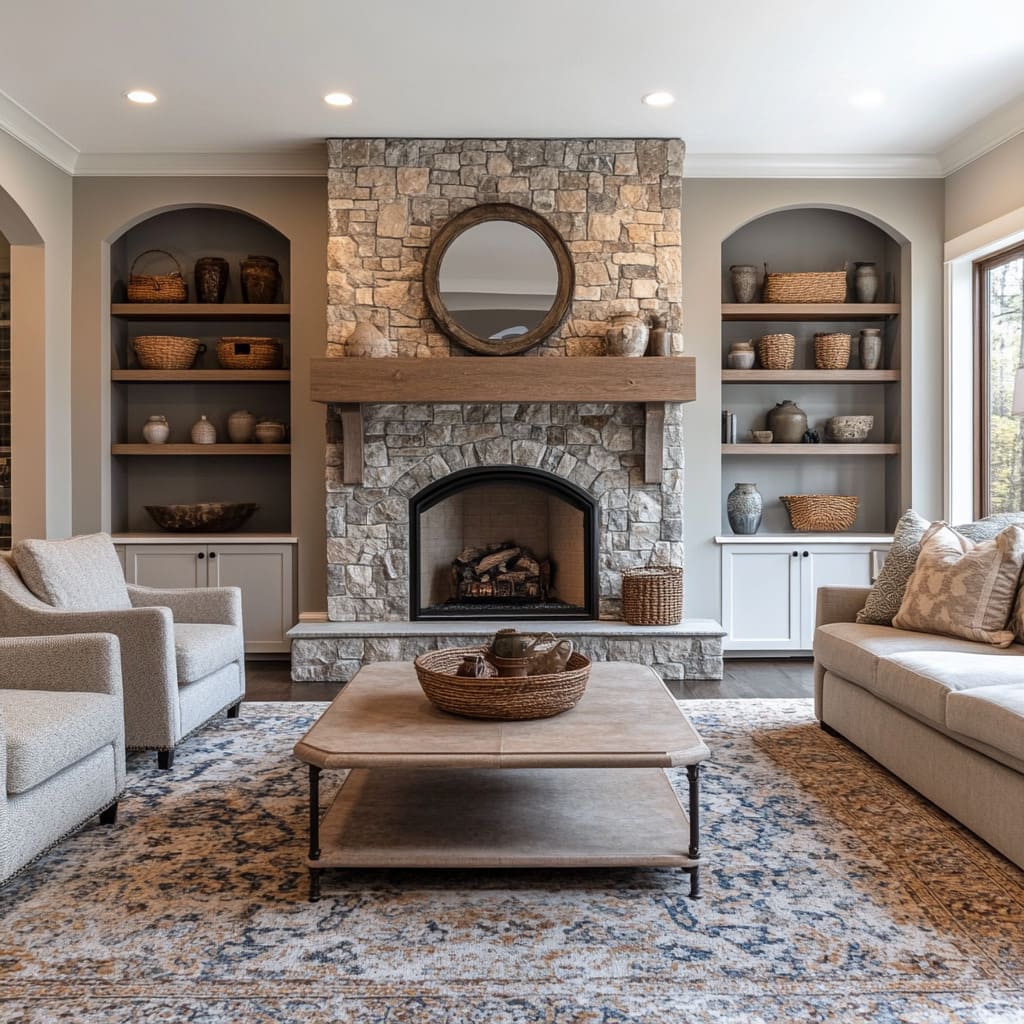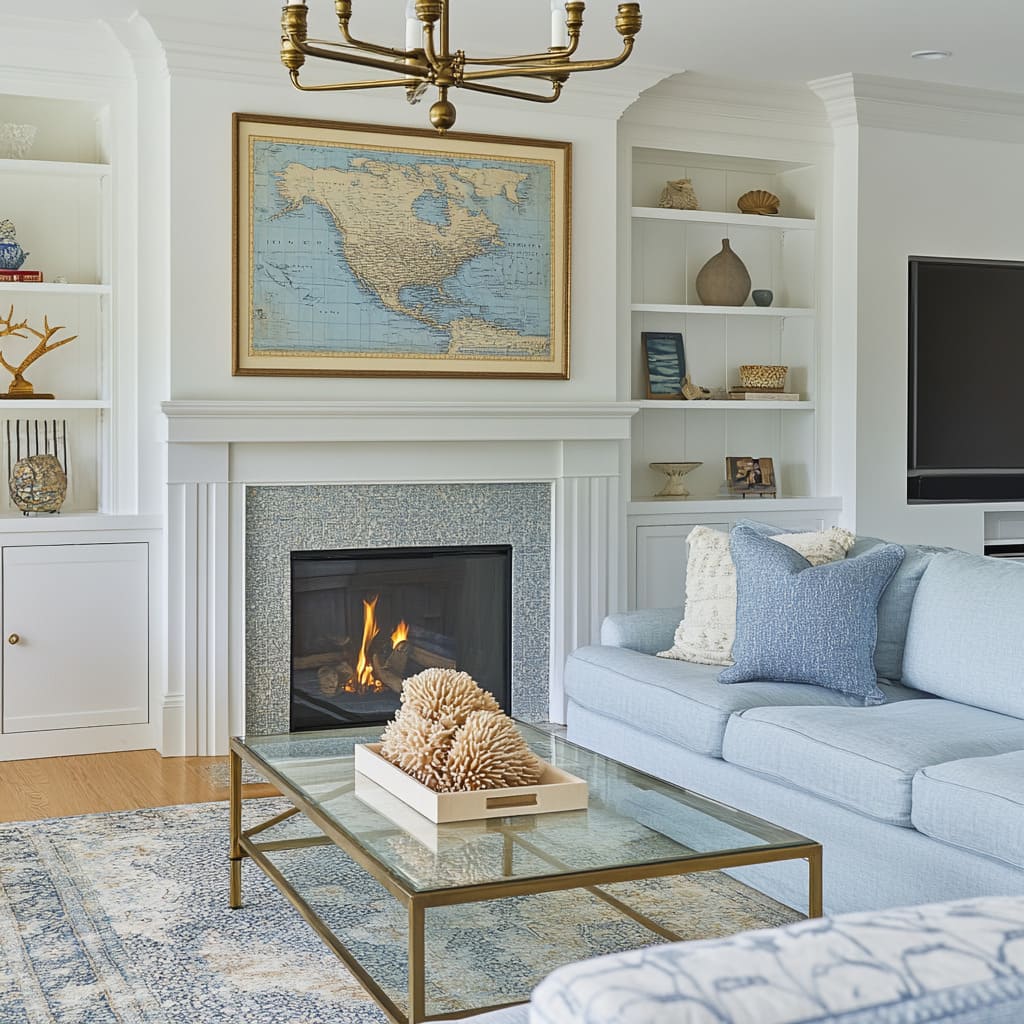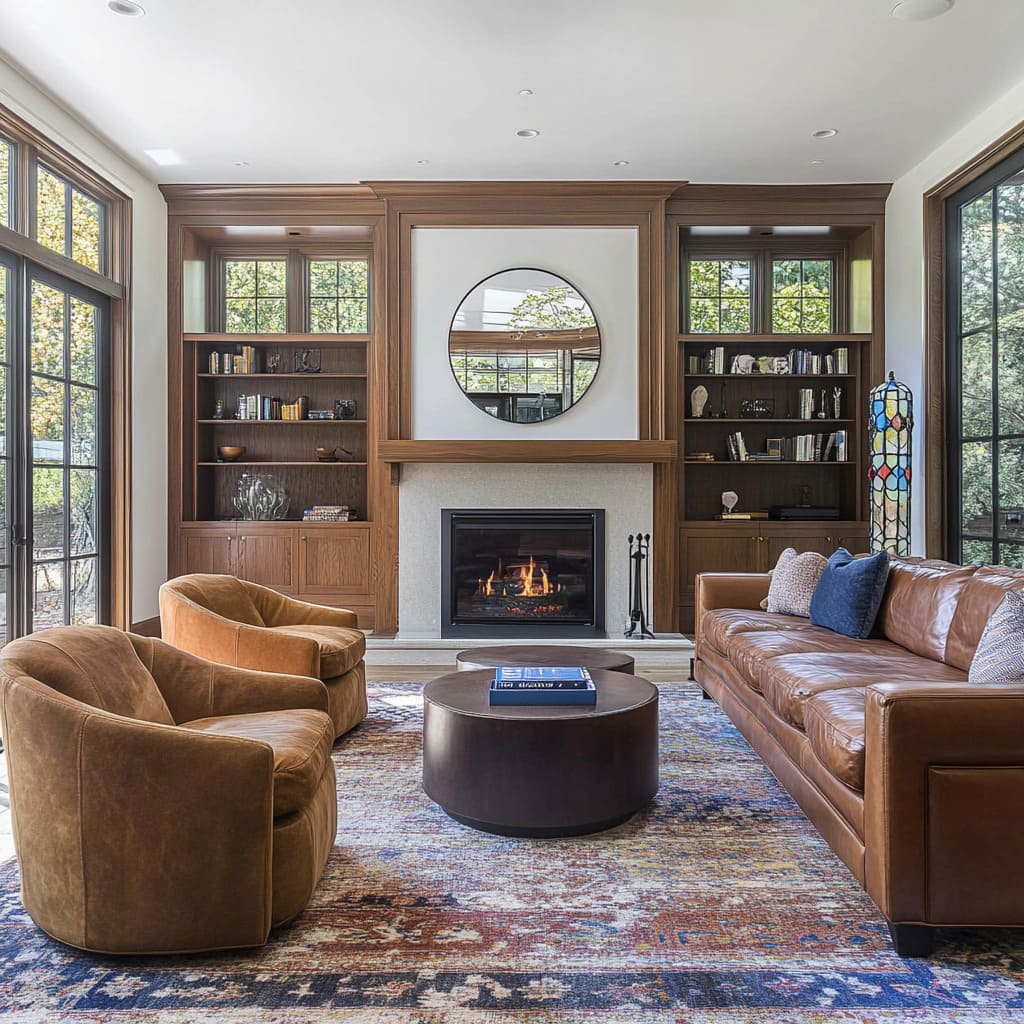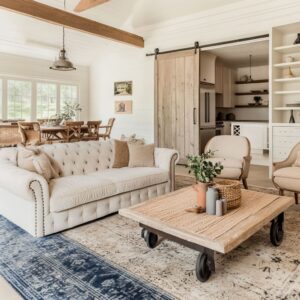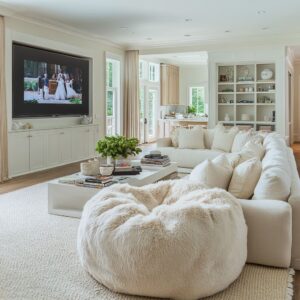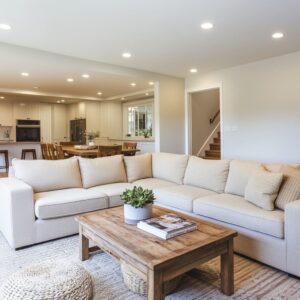Craftsman interiors are having a well-deserved revival, drawing both design enthusiasts and casual decorators who appreciate the blend of beauty and practicality this style offers. Rooted in early 20th-century America, the Craftsman style emerged as a reaction against mass production, favoring instead the value of handcraftsmanship and natural materials.
Fast forward to today, and people are once again turning to Craftsman interiors for their rich character, quality, and undeniable warmth. So, why is this style gaining popularity now?
The appeal lies in its unique ability to balance traditional charm with modern comfort. Craftsman interiors emphasize details that tell a story—whether it’s in the texture of solid wood furniture, the smoothness of natural stone, or the cozy feel of a well-designed fireplace.
This combination creates a living environment that feels personal and inviting without being overly ornate or fussy. For many, Craftsman interiors capture that perfect blend of simplicity and sophistication, where function and form come together seamlessly.
In this article, we’ll dive into the essential elements that define the Craftsman style house interior, offering practical tips for those looking to bring this classic style into their own spaces. From the materials that form its foundation to the thoughtful layout that prioritizes functionality, we’ll explore how you can make this timeless style work in your home.
Whether you’re decorating a whole house or simply looking for Craftsman living room ideas, we’ll guide you through the basics to create a look that’s warm, enduring, and perfect for today’s homes. Craftsman interiors are more than just a passing trend; they’re a return to a style that celebrates quality, nature, and architectural character.
Their timeless appeal lies in how effortlessly they adapt to modern tastes while honoring traditional design principles. Let’s look at what makes Craftsman interiors so special and how you can bring this style into your own home.
The Core Principles of Craftsman Style
Craftsman design is all about creating spaces that feel warm, natural, and built to last. Emerging in the early 1900s as part of the Arts and Crafts movement, the style was a response to the industrial era’s reliance on cheap, factory-made goods.
Craftsman interiors, by contrast, prioritize handwork and quality, focusing on materials and craftsmanship that endure.
Natural Materials
One of the defining characteristics of Craftsman interiors is the use of organic, high-quality materials. Wood, stone, and metal are foundational elements in this style, each contributing to the overall warmth and authenticity of the space.
Think of rich wood finishes—oak, cherry, and walnut are particularly popular—that bring depth and warmth to furniture, flooring, and architectural details. Exposed wooden beams, solid wood furniture, and built-in shelves showcase the beauty of these natural materials, creating a connection to the outdoors and a sense of rootedness in the space.
Stone is another key element, often seen in Craftsman fireplaces. Whether it’s rugged stonework surrounding a fire or a polished stone mantle, these touches add a natural, earthy quality that grounds the room.
Metal accents, though used sparingly, also play a role, often appearing in the form of simple, functional lighting fixtures or hardware that adds contrast against the warm wood tones. These materials, chosen for their durability and beauty, lend Craftsman interiors a quality that feels both organic and enduring.
Handcrafted Quality
Craftsmanship is at the heart of this style. In a Craftsman interior, every detail is intentional, with a focus on items that are carefully crafted rather than mass-produced.
This emphasis on handwork gives each piece—from furniture to decor—a unique character that can’t be replicated in a factory setting. It’s common to find furniture with exposed joinery, hand-carved details, and artisanal touches that highlight the skill and dedication of the maker.
This appreciation for the handmade extends to all aspects of Craftsman design, from built-in cabinetry to custom moldings. Functional items are often elevated with small details, like a carefully rounded edge on a mantelpiece or intricate woodwork on a doorframe.
These design choices add subtle interest without overwhelming the room, keeping the focus on quality rather than embellishment. Handcrafted elements also allow homeowners to bring a personal touch to the space, ensuring that each Craftsman interior feels uniquely authentic.
Functionality Meets Simplicity
Craftsman interiors are designed to be lived in, not just admired. Unlike styles that prioritize form over function, the Craftsman style aims for a balance between beauty and usability.
Built-in storage, sturdy furniture, and practical layouts are all hallmarks of this approach, making these interiors ideal for real-life, everyday use. Functionality is woven into every detail, with spaces that are thoughtfully arranged to maximize comfort and practicality.
For instance, Craftsman living room ideas often include well-designed built-in bookshelves, which provide storage while adding to the architectural interest of the room. These built-ins serve a dual purpose, offering both a display area for treasured objects and a practical solution to keep things organized.
The simplicity of Craftsman design is also a response to the ornate, heavily decorated interiors that came before it. By stripping away unnecessary embellishments, Craftsman interiors focus on what matters: high-quality materials, functional layouts, and subtle design elements.
This simplicity doesn’t mean plainness, though. Instead, it emphasizes the beauty of natural materials and well-crafted items, proving that good design can be both elegant and practical.
In a world where trends often prioritize flash over substance, Craftsman interiors offer a refreshing return to honest design. They invite you to appreciate the details, enjoy the craftsmanship, and create a home that’s not just stylish but deeply comforting.
Architectural Elements That Define Craftsman Interiors
Craftsman interiors stand out for their signature architectural details that make each room feel intentional, warm, and grounded. These elements are not only about structure but also about creating a sense of flow and inviting warmth.
Here are some defining architectural elements of the Craftsman style that bring timeless charm to any home.
Exposed Wooden Beams
Exposed wooden beams are a hallmark of Craftsman style interior decorating, adding depth, structure, and character to a room. Crafted from solid wood, these beams introduce an organic element that draws the eye upward, making ceilings feel taller while adding visual interest.
In addition to their structural function, exposed beams lend a natural, warm texture that harmonizes with the earthy tones typical of the Craftsman aesthetic. These beams can be left unfinished to showcase the natural grain and color of the wood or stained in warm, rich hues like walnut or oak to deepen the ambiance.
Exposed beams not only add warmth but also reinforce the connection between indoors and outdoors, a key theme in Craftsman design. By highlighting natural materials in this way, Craftsman interiors embrace the beauty of simplicity and craftsmanship.
Built-In Shelving and Storage
Built-in shelves and storage are another essential feature in Craftsman homes, designed to combine beauty and functionality seamlessly. These built-ins are usually crafted from solid wood and are often found flanking fireplaces or integrated into walls, providing both storage and display space.
They add a sense of permanence and structure, turning storage into an architectural feature. When it comes to styling these shelves, less is more; a carefully curated selection of books, pottery, and small sculptures can create a balanced look that feels both personal and uncluttered.
Built-in cabinets underneath the shelving allow for hidden storage, helping to maintain the clean, organized look that Craftsman interiors are known for. These built-ins serve as more than just functional storage; they act as a design statement, highlighting the Craftsman style’s focus on practicality and quality.
Arched Doorways and Windows
Arched doorways and windows bring a graceful flow to Craftsman interiors, softening the room’s lines while adding an architectural touch that feels timeless. These curves break up the linearity of walls and ceilings, creating a subtle contrast with the straight lines of other Craftsman elements like beams and built-in shelving.
Arched windows, in particular, allow natural light to pour into the space, illuminating the room’s textures and highlighting the warmth of the wood tones. In Craftsman home decorating ideas, arched openings are often a central design choice, adding charm without requiring excessive ornamentation.
These architectural curves create a warm, welcoming feeling, adding a unique sense of character to the space and enhancing the flow from one area of the home to another.
Stone and Brick Fireplaces
A fireplace is often the heart of a Craftsman living room, serving as both a visual anchor and a source of warmth. Stone and brick are commonly used materials, giving the fireplace a rustic, grounded feel that ties back to the style’s roots in natural materials.
Stone fireplaces, whether made of rugged fieldstone or more refined river stone, provide an earthy texture that complements the wood and other natural elements in the room. Brick, especially in warm red or tan tones, adds a sense of coziness and tradition.
Craftsman style home decorating ideas often revolve around the fireplace, with built-ins or cozy seating arranged around it. The fireplace mantle is usually understated, allowing the natural materials to be the star of the show.
A well-designed stone or brick fireplace in a Craftsman interior becomes a focal point that draws people in, creating a warm and inviting space for gathering.
Color Palette and Materials: Creating a Cohesive Craftsman Aesthetic
One of the reasons Craftsman interiors feel so welcoming is the cohesive color palette that ties everything together. Craftsman interiors use neutral and earthy tones, complemented by natural wood finishes and subtle, textured patterns, to create an environment that feels both grounded and harmonious.
Here’s how to bring these color and material choices into your home.
Neutral and Earthy Tones
The Craftsman color palette is dominated by warm neutrals and earth tones, which help create a cozy and inviting environment. These colors, like soft beige, creamy whites, warm taupe, and gentle greens, are chosen to complement the natural materials used throughout the space.
For instance, a light gray or warm beige wall color pairs beautifully with darker wood accents, enhancing the warmth of the room without overpowering it. Muted shades of blue or green can be added for subtle contrast, often seen in area rugs or accent pillows, without disturbing the room’s overall harmony.
This palette of earthy tones ensures that the space feels cohesive, encouraging relaxation and making every room feel connected. In Craftsman interior decorating, the emphasis on natural colors creates a sense of depth and calm, making the room feel timeless.
Natural Woods
Natural, unpainted woods are essential to achieving an authentic Craftsman look. Oak, walnut, and cedar are commonly used types of wood that bring both beauty and durability to the space.
These woods are often seen in exposed beams, mantels, built-in shelves, and furniture pieces, showcasing their natural grain and rich tones. Instead of painting these surfaces, Craftsman interiors celebrate the wood’s inherent beauty with a simple finish or stain, allowing the texture and color to shine.
Oak, with its distinct grain, is often used for larger architectural elements like beams and built-in cabinetry, while walnut’s deeper hue is popular for furniture pieces. Cedar, with its unique reddish tone, adds variety and warmth.
Incorporating these woods across different elements—such as using oak for beams and walnut for furniture—creates layers of texture and richness. These materials are a core component of Craftsman home decorating ideas, emphasizing the connection to nature and the beauty of organic materials.
Textured and Intricate Patterns in Rugs and Tiles
Craftsman interiors often feature rugs and tiles with subtle, intricate patterns that add depth and interest without overwhelming the room. Traditional-style area rugs in shades of blue, rust, and beige are popular choices, their patterns reflecting the influence of Persian and Oriental designs.
These rugs introduce a refined layer of texture underfoot, tying the room together and adding warmth, especially in living rooms and bedrooms. In the fireplace surround or kitchen backsplash, hand-crafted tiles with soft, earthy colors and understated patterns add another layer of visual interest.
Tile work in Craftsman interiors is typically subtle, avoiding bold colors in favor of designs that enhance the natural palette. This approach keeps the focus on the craftsmanship and quality of materials, rather than flashy ornamentation.
When combined with wood and stone elements, these textured rugs and tiles add to the cohesive, cozy feel that defines the Craftsman aesthetic. Incorporating these architectural elements, colors, and materials can help transform any space into a Craftsman-inspired haven.
By paying attention to the details and focusing on natural materials, warm colors, and thoughtful design, you can bring the timeless appeal of Craftsman interiors into your own home.
Furniture Choices: Blending Comfort and Heritage
Furniture in a Craftsman-inspired interior is all about blending comfort, quality, and heritage. Each piece serves a purpose, and the aesthetic is one of timeless elegance that isn’t flashy but grounded.
Craftsman living room furniture emphasizes solid construction, natural materials, and subtle beauty, all in the spirit of the Arts and Crafts movement that values handmade quality and functionality.
Choosing Leather and Fabric Sofas
In a Craftsman living room, choosing the right sofa sets the tone for the entire space. Leather sofas are a popular choice, especially in rich, earthy tones like cognac, deep brown, or even subtle greens.
Leather has a rustic, authentic feel, especially as it ages, adding character and warmth to the room over time. A leather sofa can give the room a grounded, traditional look that complements the natural wood and stone elements typical of Craftsman interiors.
On the other hand, fabric-upholstered sofas bring a softer touch to the room. Neutral, earthy fabrics in shades like cream, beige, or warm gray work well in Craftsman spaces, offering a lighter, more inviting appearance while maintaining the room’s cozy feel.
Fabric sofas can be chosen for added comfort, particularly if you’re aiming for a more relaxed, welcoming look. Mixing a fabric sofa with leather armchairs or a leather ottoman can create a balanced seating area that feels both inviting and visually rich.
In either case, upholstery colors should complement the natural, warm tones of wood and stone to maintain the Craftsman aesthetic.
Classic Armchairs and Ottoman Choices
Armchairs and ottomans add both comfort and a touch of traditional style to a Craftsman living room. Leather or fabric armchairs with sturdy wooden frames provide the durability and rustic appeal that suit the Craftsman aesthetic.
For an arts and crafts style living room, these chairs may feature subtle detailing, like exposed wooden arms or tufted cushions, that add character without overpowering the room’s clean, simple lines. Ottomans, too, are practical and stylish additions, offering a place to rest your feet or additional seating when needed.
Leather ottomans in rich colors add a layer of texture, while fabric ottomans with subtle patterns or tufted designs can introduce a touch of softness. Together, armchairs and ottomans help to create a warm, inviting space that blends traditional style with modern comfort.
Solid Wood Coffee Tables
In the Craftsman style, a substantial, handcrafted coffee table serves as a visual anchor for the room. A solid wood coffee table with a simple, robust design brings out the natural beauty of the wood and reinforces the connection to nature that is central to Craftsman interiors.
Woods like oak, walnut, or cherry add a rich, organic element that complements the other materials in the room, whether it’s leather, fabric, or stone. Decorating a craftsman house often involves choosing pieces with a purpose, and the coffee table is no exception.
It can be styled with simple, rustic decor items such as a clay bowl, a few vintage books, or a small plant in a ceramic pot. This minimalist approach keeps the look uncluttered, allowing the beauty of the natural wood to stand out while adding a touch of personality to the space.
Minimalist and Functional Furniture
The essence of Craftsman furniture lies in its simplicity and functionality. Pieces are designed to be solid, practical, and unembellished, letting the quality of materials and craftsmanship shine.
Furniture in a Craftsman interior typically has clean lines and minimal ornamentation, focusing instead on the natural beauty of the wood and the strength of the structure. Whether it’s a sturdy wooden side table, a bookshelf, or a dining table, Craftsman-style furniture is made to be used and appreciated for its durability.
This minimalist, functional approach keeps the room open and uncluttered, allowing each piece to make a quiet statement. In a Craftsman-style room, furniture should feel intentional, offering a sense of timelessness and stability that speaks to the heritage of the design style.
Decorating Craftsman Interiors with Art and Accessories
Decorating a Craftsman home goes beyond furniture and architecture; it’s about adding those finishing touches that bring the space to life. Art and accessories in a Craftsman interior are typically nature-inspired, carefully curated, and chosen to complement the room’s earthy, organic feel.
Nature-Inspired Artwork
Craftsman interiors often feature artwork that reflects a connection to nature. Landscape paintings, especially those depicting serene fields, mountains, or wooded scenes, are popular choices, bringing a sense of the outdoors into the home.
Black-and-white photography of natural elements, like trees, rivers, or wildlife, also works well, providing a subtle, timeless appeal. These art pieces are typically framed in simple, natural wood or black frames, allowing the focus to remain on the artwork itself rather than on ornate borders.
Choosing nature-inspired artwork aligns with the Craftsman commitment to simplicity and organic beauty. These pieces don’t dominate the room; instead, they add depth and reinforce the room’s color palette, making the space feel cohesive and well-thought-out.
Curated Built-In Displays
In a Craftsman home, built-in shelves are often present and offer an ideal space to display personal items that add warmth and character to the room. To create a curated display, arrange items like books, pottery, ceramics, and small sculptures in a way that feels balanced and personal.
Books with textured or muted covers add both color and visual interest, while pottery in earthy tones—like clay vases or hand-thrown bowls—brings a sense of craftsmanship and individuality. For a classic look, arrange items in clusters of threes or fives, mixing heights and textures to keep the display dynamic.
Leave some negative space between items to avoid a cluttered look. In Craftsman interiors, less is often more; every item should feel intentional and add to the room’s overall aesthetic without overwhelming it.
Earthy and Textured Decor Pieces
To enhance the organic feel of a Craftsman room, choose decor pieces made from natural materials with rich textures. Clay vases, woven baskets, and rustic pottery are ideal additions, bringing in a sense of the handmade and grounding the space with their earthy tones.
These pieces introduce tactile elements that contrast with the smoother surfaces of furniture and walls, adding depth and warmth. Incorporating these decor pieces keeps the room feeling connected to nature, aligning with the Craftsman focus on organic materials.
A few well-placed items—like a woven basket for storage or a textured vase on a side table—can add charm and enhance the Craftsman style without taking attention away from the architectural details or furniture.
Using Lighting for Ambiance
Lighting plays a crucial role in Craftsman interiors, not just for functionality but for creating a warm, inviting atmosphere. Wall sconces with vintage-inspired designs are a perfect match, adding both form and function.
These sconces often feature black metal or bronze finishes, fitting seamlessly into the Craftsman palette and adding subtle contrast against light walls or wood paneling. Chandeliers with clean, geometric lines in black metal are another great choice, hanging over coffee tables or dining tables to anchor the space and provide a focal point.
Ceiling lights and table lamps with simple designs complement Craftsman interiors well, keeping the look understated yet refined. The key is to choose lighting that enhances the room’s ambiance without drawing too much attention—just enough to highlight the room’s textures and bring warmth to the space.
Whether you’re decorating a new space or enhancing an existing Craftsman interior, the right art, accessories, and lighting can bring a sense of completion and warmth to the home. By focusing on pieces that align with the natural, handcrafted essence of the Craftsman style, you’ll create a space that feels cohesive, inviting, and filled with character.
Adding Textures and Patterns: Rugs, Curtains, and Pillows
A key aspect of Craftsman interiors is the careful layering of textures and patterns to enhance the room’s warmth and depth. From intricate rugs that ground the space to soft pillows and natural curtains, each layer adds a tactile and visual richness that is both cozy and inviting.
Here’s how to incorporate these elements for a complete look.
Rugs with Traditional Patterns
Rugs are fundamental in a Craftsman room, providing a base layer of texture that brings both comfort and style to the space. Traditional rugs with subtle, intricate patterns in warm tones are a natural fit.
Persian-inspired designs, often featuring deep reds, burnt oranges, soft blues, and earthy greens, are particularly popular. These rugs have a slightly faded look, which adds a sense of age and authenticity, grounding the room with an understated elegance.
The richness of these patterns draws the eye and complements the simplicity of the surrounding decor, creating a balanced visual appeal. In modern craftsman living room setups, the vintage or antique-style rugs add depth without overwhelming the natural materials and warm wood tones that define the space.
Not only do these rugs bring warmth to the floor, but they also serve as an essential link between various furniture pieces, pulling the room together. Whether you’re placing the rug under a coffee table or in front of a fireplace, these pieces add character, inviting guests to relax and enjoy the room’s warmth.
Layering Textures with Pillows and Throws
Pillows and throws offer an easy way to layer textures and add a touch of softness to a Craftsman room. Choose pillows in fabrics like wool, linen, and cotton, as these materials have a natural feel that complements the earthy tones and organic finishes in the space.
Neutral colors with soft, understated patterns—such as simple stripes, plaids, or even small geometric designs—work best, as they enhance the room’s depth without competing with other elements. Throws can be draped over armchairs, sofas, or benches, adding warmth and a tactile layer that invites relaxation.
A chunky wool throw or a light, woven cotton blanket in muted hues brings both comfort and style. Layering these pieces in different textures and colors, while staying within a cohesive color palette, adds visual interest and makes the space feel lived-in.
In a Craftsman room, these textiles don’t just serve as decor; they also contribute to the room’s overall comfort and welcoming vibe.
Choosing Subtle, Natural Curtains
When it comes to window treatments in a Craftsman interior, simplicity is key. Choose curtains in neutral shades—think off-whites, soft grays, or warm beiges—that allow natural light to filter in, creating a gentle glow in the room.
Heavy drapes are usually avoided in favor of lighter, natural fabrics like linen or cotton, which bring a soft frame to the windows without blocking the light. This approach keeps the room feeling open and airy, allowing the architectural details and natural wood tones to take center stage.
The beauty of these curtains lies in their ability to provide privacy and frame the view without detracting from the room’s warmth and natural appeal. If a bit of color is desired, choose tones that reflect the outdoors, like soft sage or dusty blue, to maintain the connection with nature that’s central to Craftsman interiors.
This approach to window treatments completes the Craftsman look by reinforcing the room’s cozy and cohesive aesthetic.
Craftsman Lighting: Creating the Perfect Ambiance
Lighting in a Craftsman room goes beyond just functionality. It’s about creating a warm, inviting atmosphere that highlights the room’s textures and adds to its layered, cozy aesthetic.
The right lighting choices can transform the space, enhancing both the ambiance and the architectural elements that make Craftsman style so distinctive.
Statement Chandeliers with Simple Designs
A well-chosen chandelier serves as both a functional light source and a subtle statement piece in modern Craftsman interior decorating. The best choices are chandeliers with clean, minimal lines, often made of black metal, iron, or aged brass.
Exposed bulbs or candle-style lighting add a touch of rustic charm without overwhelming the room. These fixtures often have a slight industrial edge, which contrasts beautifully with the natural woods and soft textiles found in Craftsman rooms.
A black metal chandelier, for example, can create a bold yet understated focal point in the living room or dining area, drawing the eye upward and adding a layer of interest. The simplicity of these chandeliers complements the Craftsman aesthetic by adding impact without excessive detail.
This style of lighting emphasizes function and form, fitting seamlessly into a Craftsman room where every element has a purpose.
Wall Sconces and Ambient Lighting
Wall sconces play a significant role in crafting the warm, layered lighting that Craftsman interiors are known for. Placed beside built-ins, fireplaces, or along hallways, sconces with warm bulbs create a cozy ambiance that highlights architectural features.
Simple designs, such as bronze or black metal fixtures, work well in Craftsman spaces, as they bring a touch of traditional charm without drawing too much attention. Ambient lighting, like table lamps with soft shades or ceiling fixtures that spread light evenly, helps to illuminate the room without creating harsh shadows.
This layering of light adds depth and dimension, enhancing the room’s textures and making it feel inviting. Craftsman decorating ideas often involve thoughtful lighting placement, using wall sconces and table lamps to accentuate specific areas, such as reading nooks or seating arrangements, while adding to the room’s welcoming atmosphere.
Maximizing Natural Light
Natural light is a cornerstone of Craftsman interiors, and large windows that flood the space with daylight are highly valued. This light enhances the warmth of wood tones, highlights the texture of rugs, and makes every element feel more vibrant.
By letting in as much natural light as possible, Craftsman spaces maintain an airy, open feel that complements the grounded, earthy elements in the room. To maximize natural light, keep windows unobstructed or framed with simple, sheer curtains that allow sunlight to filter through gently.
This approach not only emphasizes the architectural beauty of Craftsman windows but also brings out the textures and tones of the room’s furnishings. In modern Craftsman living rooms, natural light plays an essential role in balancing the rich colors and textures, creating a comfortable and inviting space that feels both open and warm.
Lighting in a Craftsman home should always enhance, rather than compete with, the overall design. By choosing fixtures that align with the room’s architecture and maximizing natural light, you can achieve the warm, layered ambiance that’s characteristic of Craftsman interiors.
Each light source—whether it’s a chandelier, wall sconce, or natural sunlight—contributes to the room’s overall harmony, making the space feel complete and thoughtfully designed.
How to Achieve Modern Craftsman Fusion
Creating a modern Craftsman fusion in your home allows you to enjoy the best of both worlds: the timeless appeal of traditional Craftsman elements with the sleek, clean lines of contemporary design. This approach respects the heritage of Craftsman style while bringing it into a modern context, making it ideal for those who appreciate craftsmanship but crave a fresh, updated look.
Mixing Modern and Classic Elements
Achieving the right balance between modern and classic elements requires a mindful approach to furniture and decor. Start by blending traditional Craftsman features, such as wood beams or built-in cabinetry, with minimalist, modern furniture.
For example, a classic Craftsman living room with exposed wooden beams and a stone fireplace can be paired with a streamlined sofa in a neutral color. Opt for furniture with clean lines and simple designs to keep the room feeling fresh, yet rooted in Craftsman tradition.
Adding a metal-framed coffee table or a contemporary art piece on the wall can subtly introduce modernity without overpowering the classic Craftsman features. The goal is to strike a harmony between the warmth and texture of Craftsman elements and the simplicity of modern decor.
This creates a balanced look that feels current while honoring the character and craftsmanship of traditional design.
Incorporating Subtle Industrial Details
One effective way to give a Craftsman home a modern edge is to incorporate subtle industrial details, which add a touch of urban flair without clashing with the style’s natural materials. Black metal accents, for instance, work beautifully in Craftsman interiors.
Consider light fixtures with exposed bulbs and black metal frames, or add black metal hardware to kitchen cabinets for a modern update.
Shelving brackets, table legs, and even door handles in black or dark metal add contrast against the warm woods and earth tones typically found in Craftsman interiors. These details offer a sophisticated, contemporary touch that enhances the space without overpowering it.
A Craftsman style interior decorating approach can use industrial accents to create an aesthetic that’s both refined and modern while remaining grounded in traditional elements.
Choosing Minimalist Decor to Avoid Clutter
In Craftsman interiors, the beauty lies in the craftsmanship and the natural materials, so it’s essential to keep the decor simple and uncluttered. Minimalist decor choices allow the room’s architectural features, like wooden beams, stone fireplaces, and built-in cabinetry, to take center stage.
Stick to a neutral color palette, and select a few meaningful decor items rather than overloading the space with accessories. Consider using only a handful of decorative elements, such as a ceramic vase, a few books, and a small sculpture, to keep surfaces clear.
This approach prevents visual clutter and lets each item contribute meaningfully to the room. In a Craftsman setting, quality is far more valuable than quantity.
By keeping decor minimal and choosing each piece thoughtfully, you create a space that feels serene, inviting, and true to the Craftsman aesthetic.
Conclusion
The appeal of Craftsman interiors lies in their timeless elegance, warmth, and natural beauty. This style isn’t about flashy trends or intricate ornamentation; rather, it emphasizes quality materials, thoughtful design, and a close connection to nature.
With its strong foundation in handcrafted quality and earthy tones, the Craftsman style remains relevant and adaptable to modern tastes, offering a cozy and grounded aesthetic that feels both nostalgic and fresh. For those drawn to the charm of Craftsman style, there are countless ways to make it your own.
From experimenting with modern touches to blending traditional elements with minimalist decor, the possibilities are endless. Craftsman style decorating ideas can help you create a space that feels uniquely yours, reflecting your appreciation for craftsmanship and simplicity.
Whether you’re inspired by the Craftsman style living room with its warm wood tones and inviting textures, or the idea of a well-landscaped yard that blends seamlessly with your home’s architecture, Craftsman style offers a blueprint for creating a comfortable and aesthetically pleasing environment. This design approach reminds us that a home can be both beautiful and functional, a place where quality materials and thoughtful design come together to create spaces that feel timeless and welcoming.

